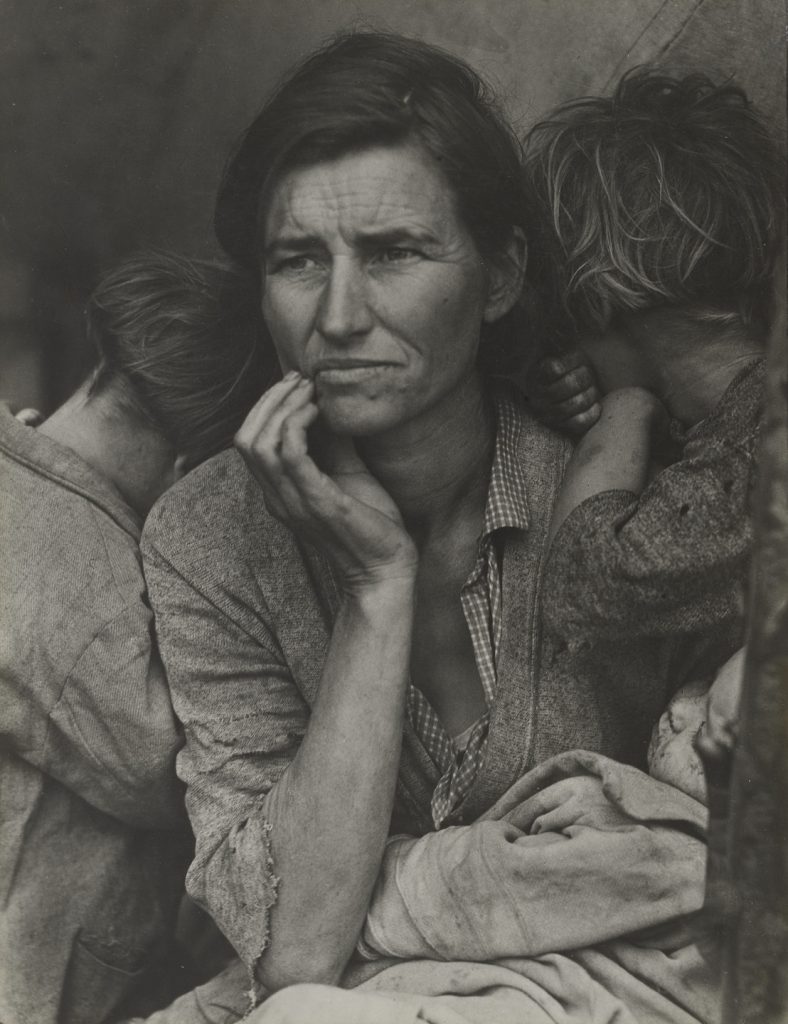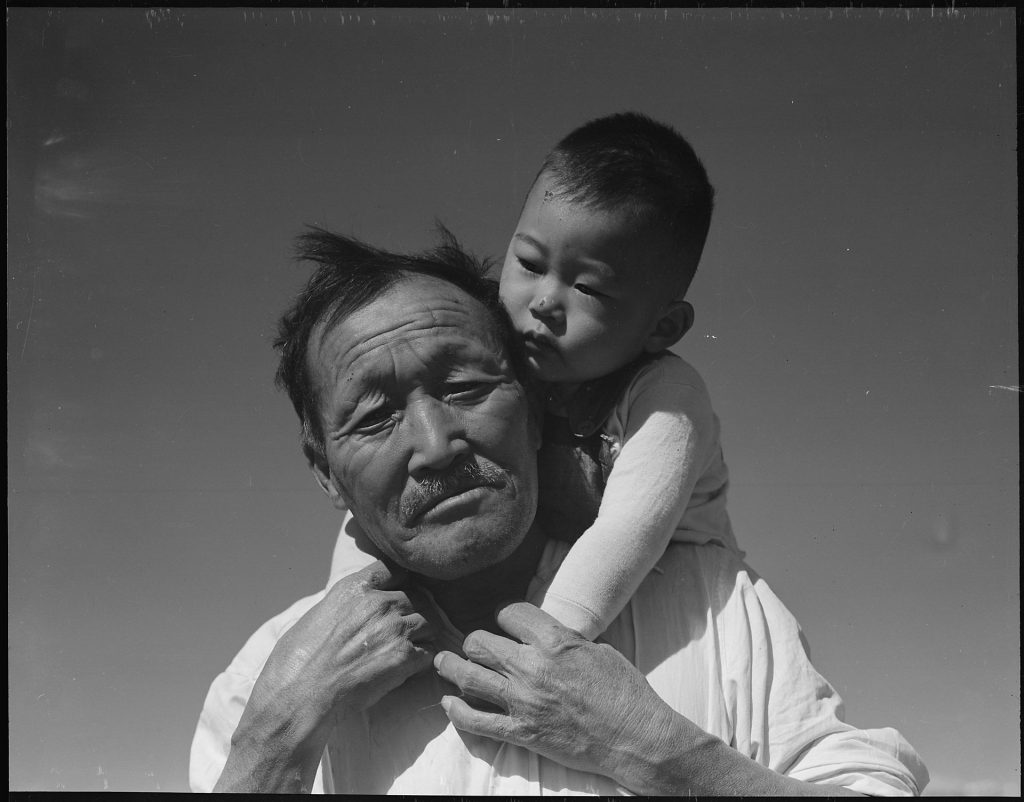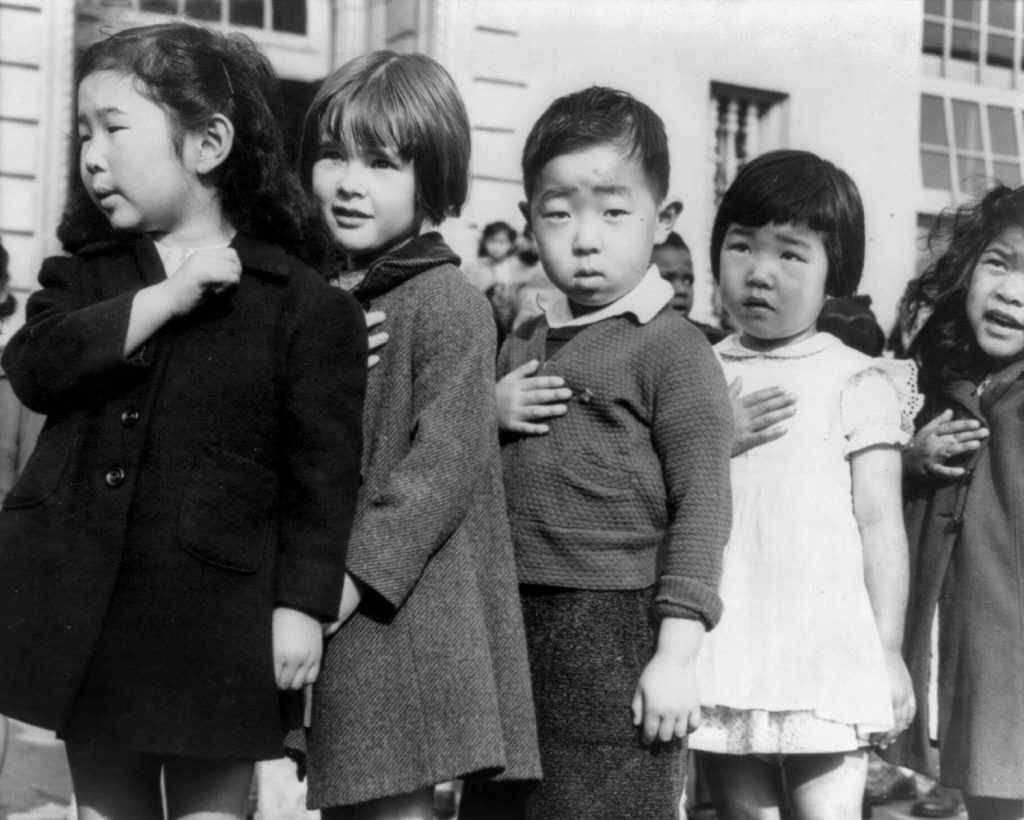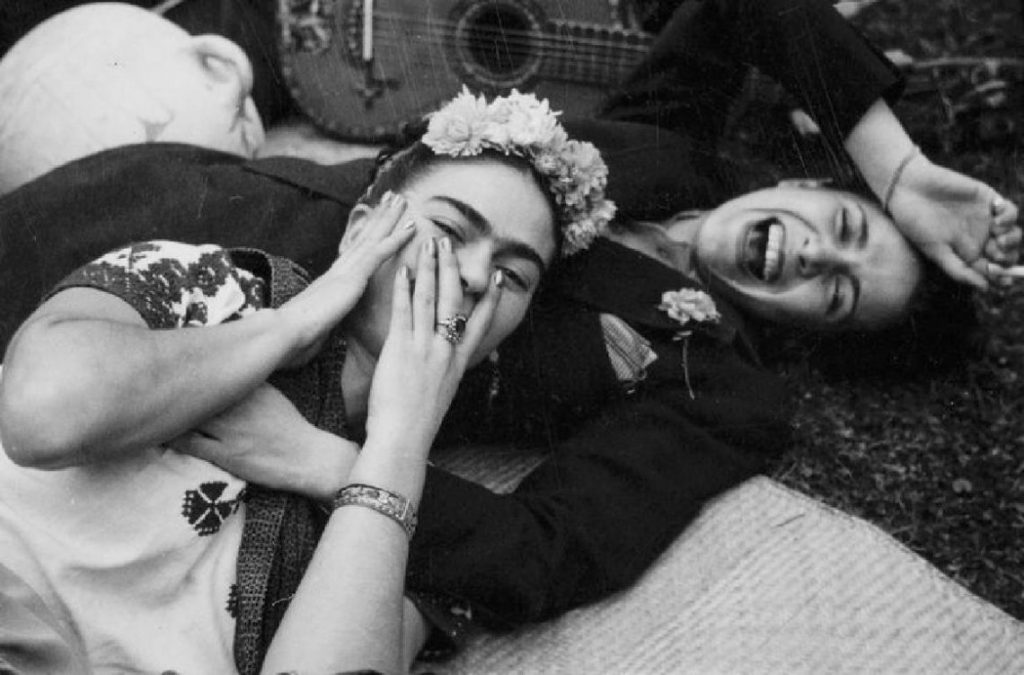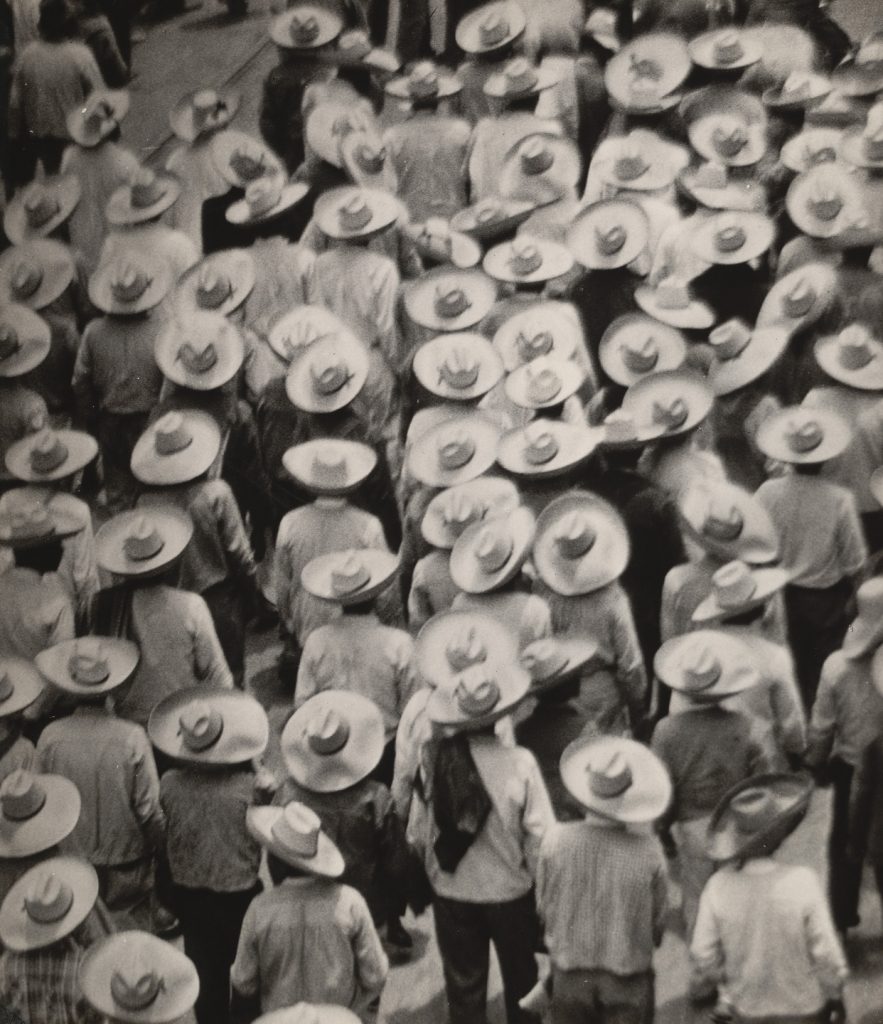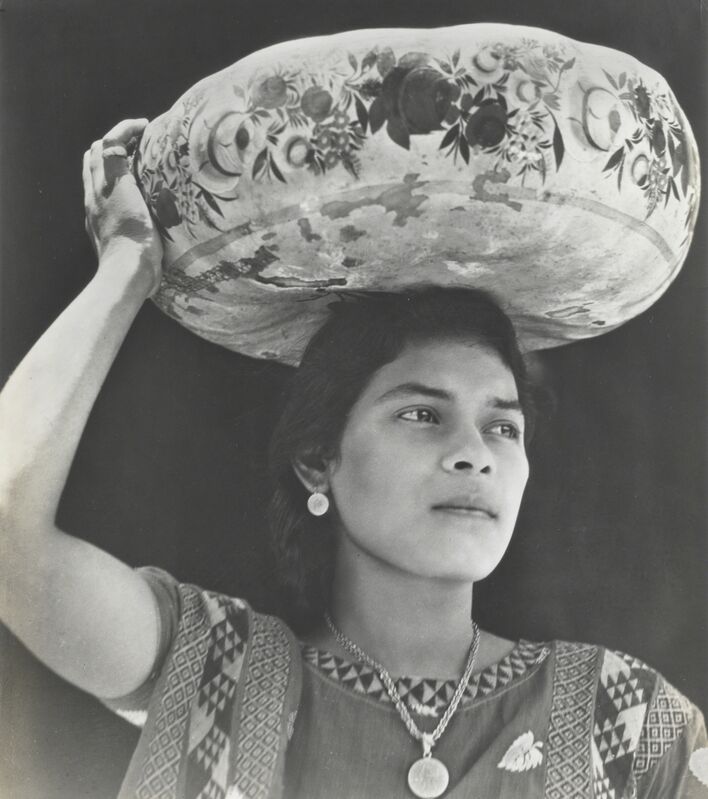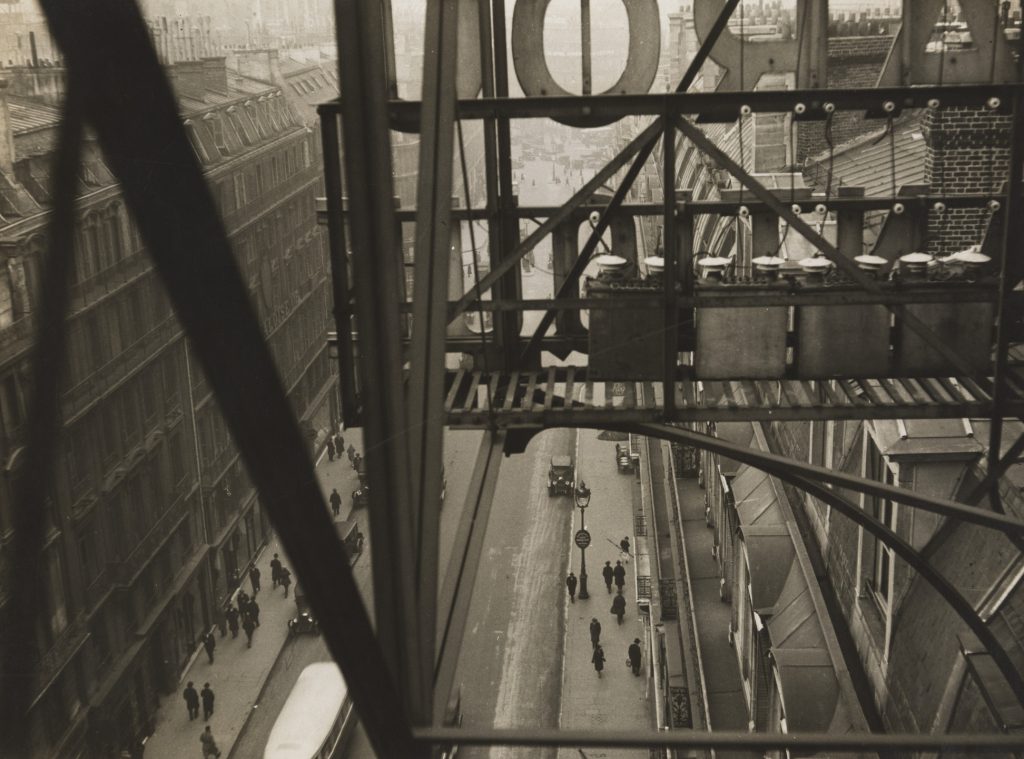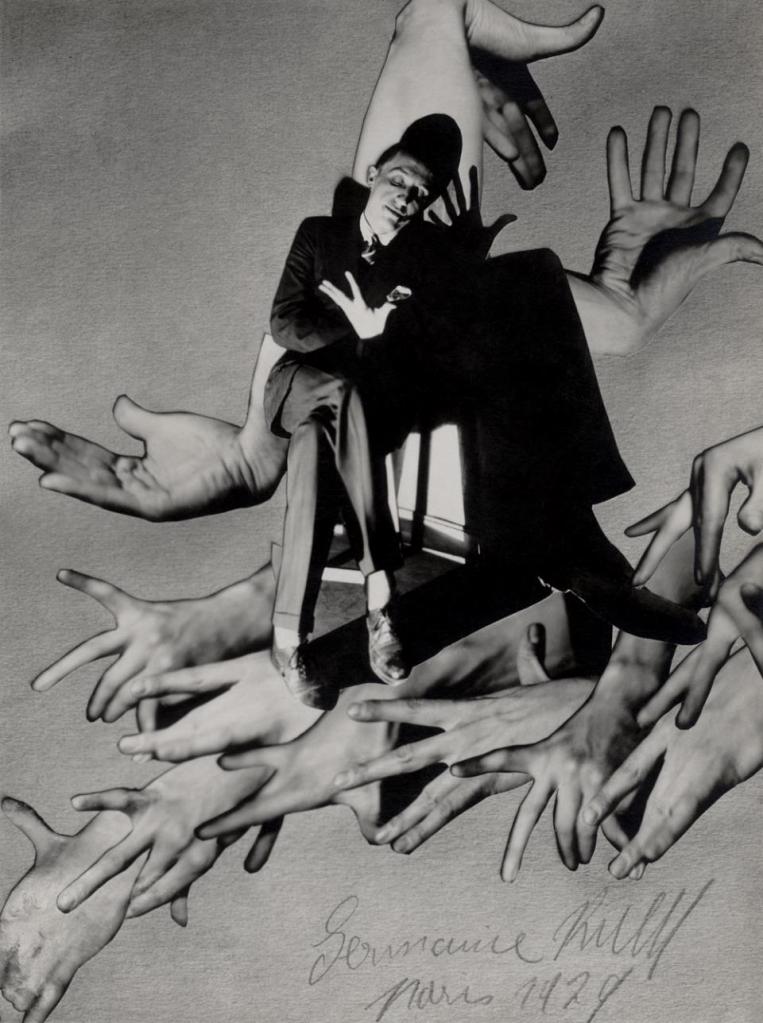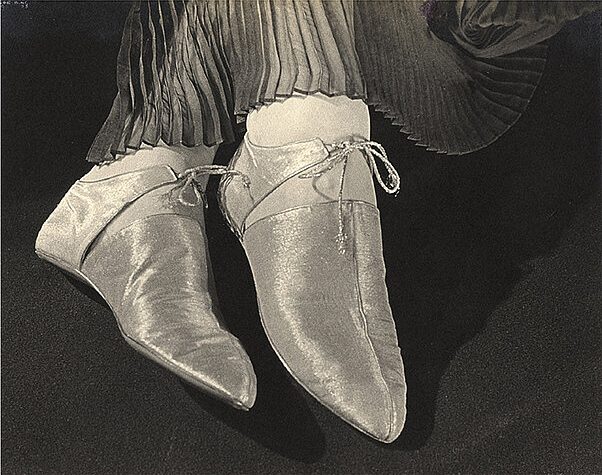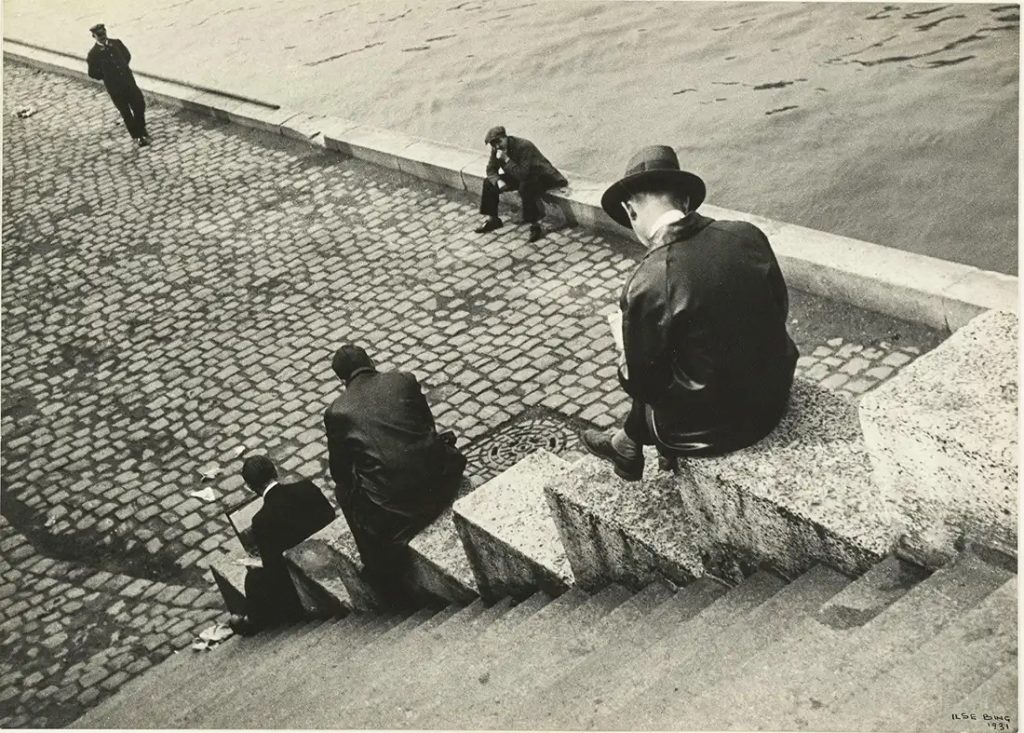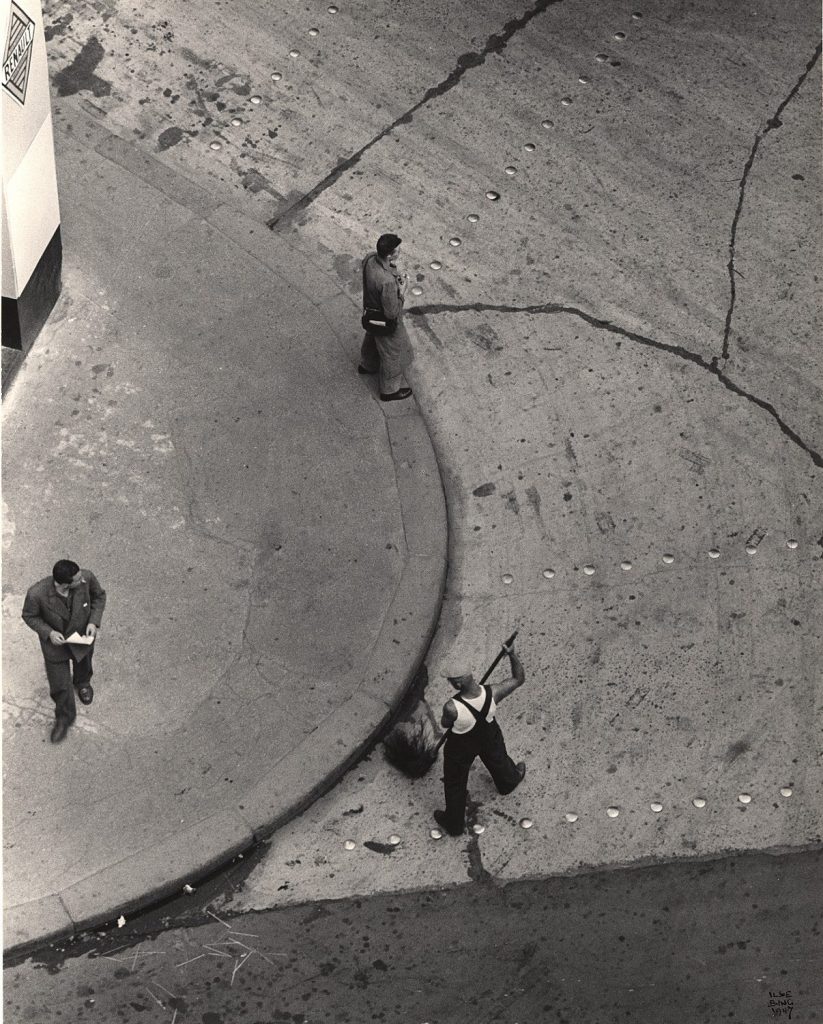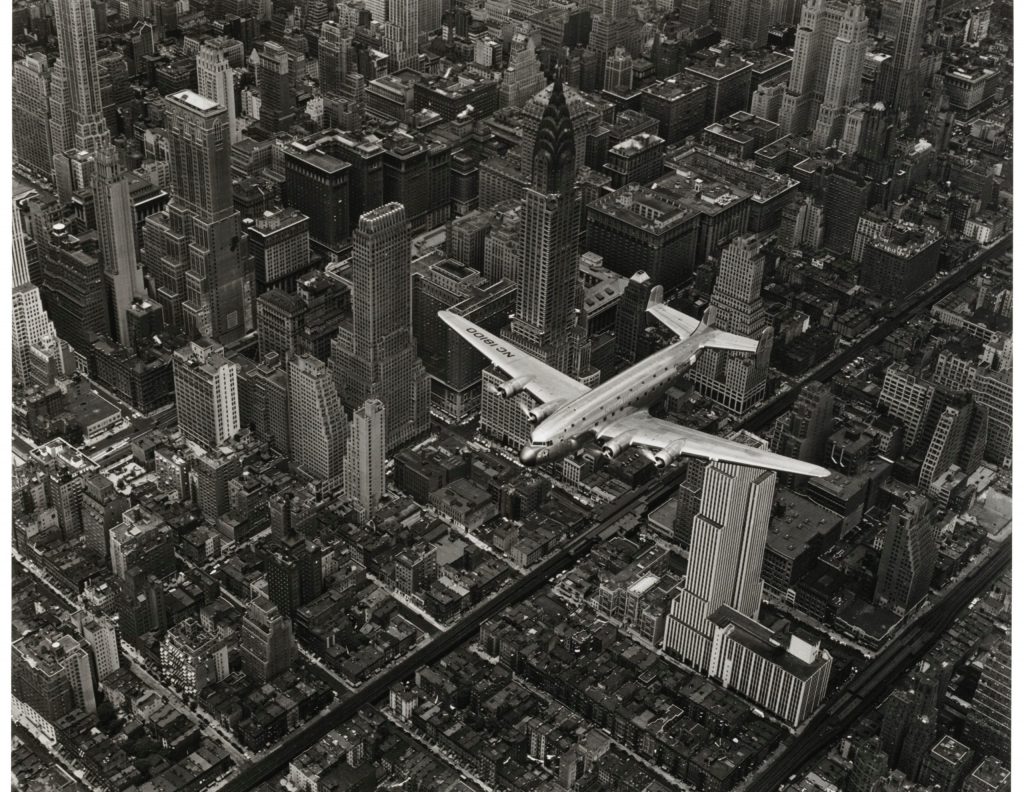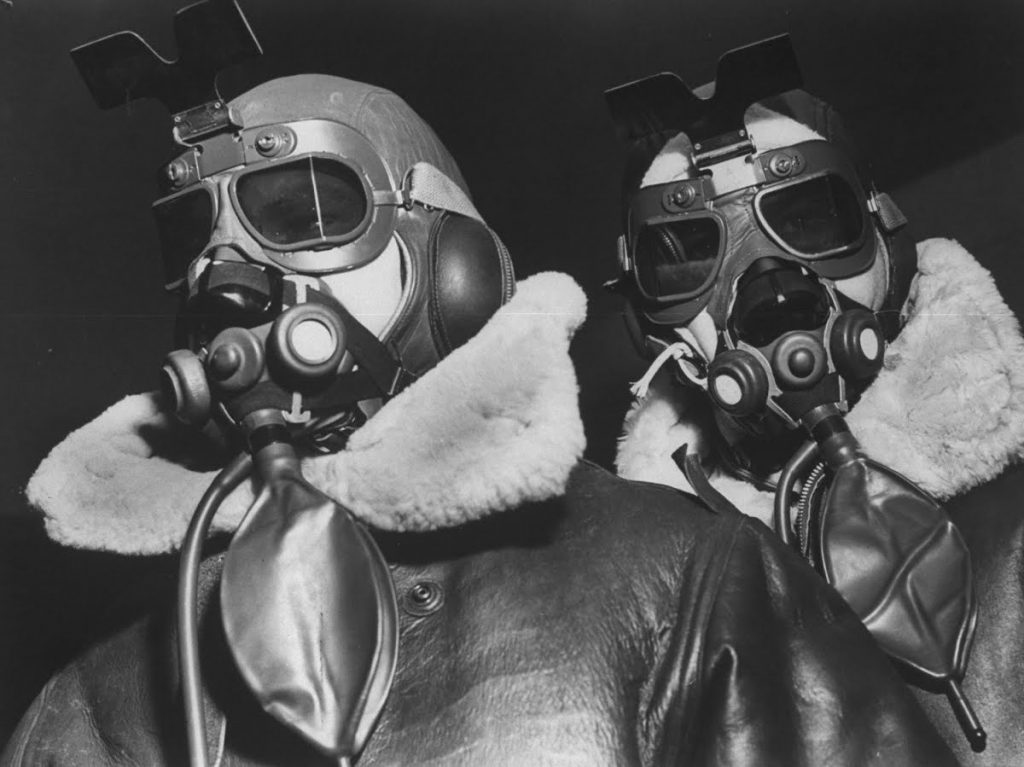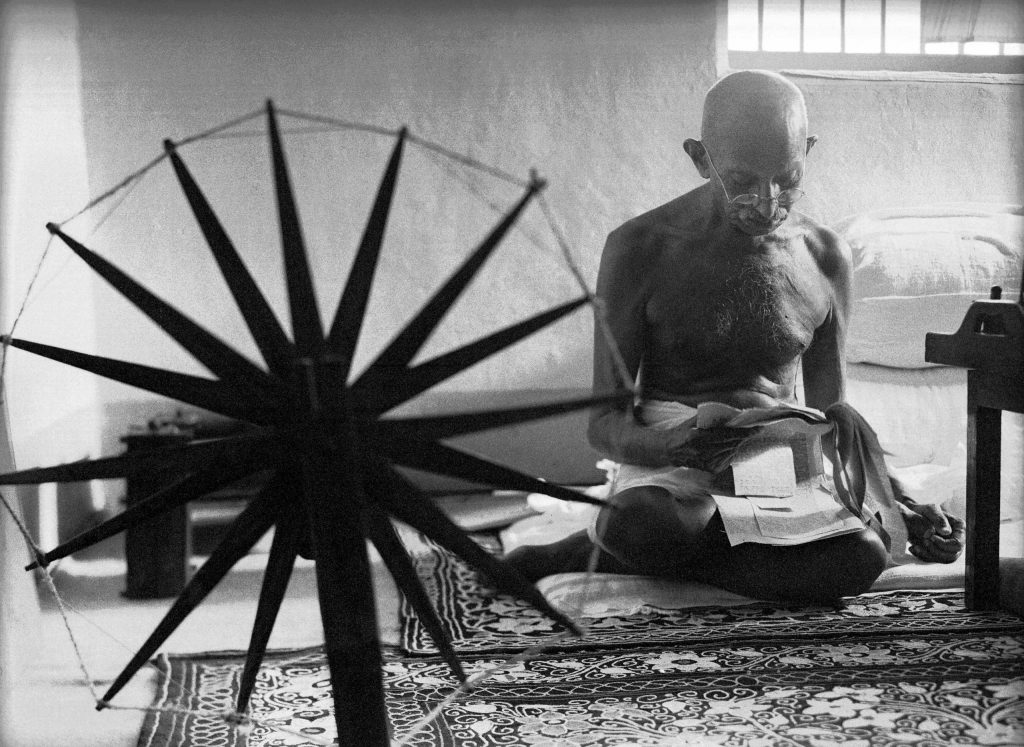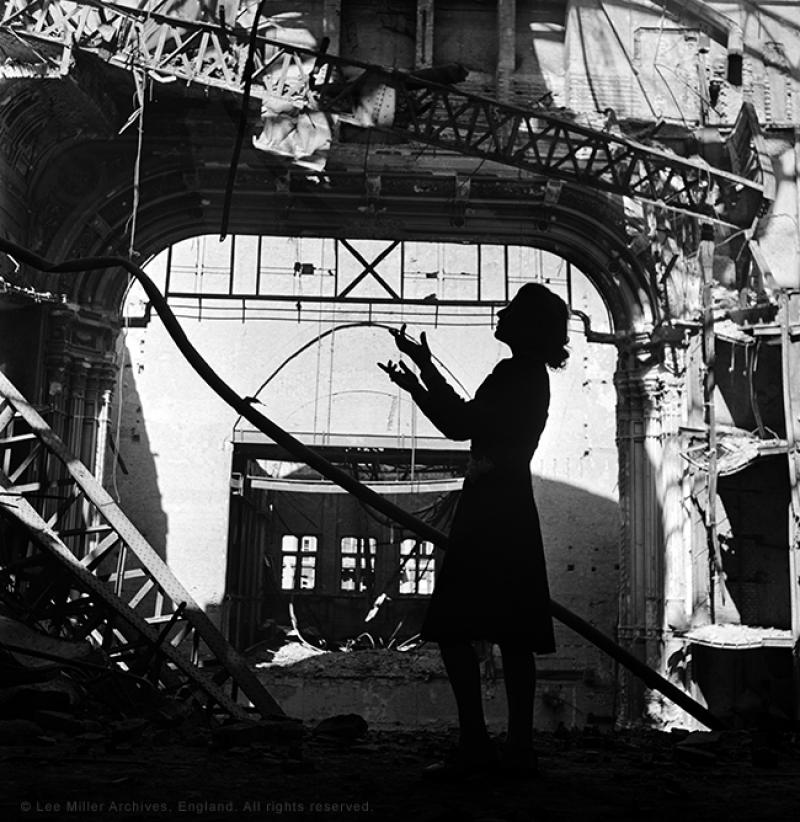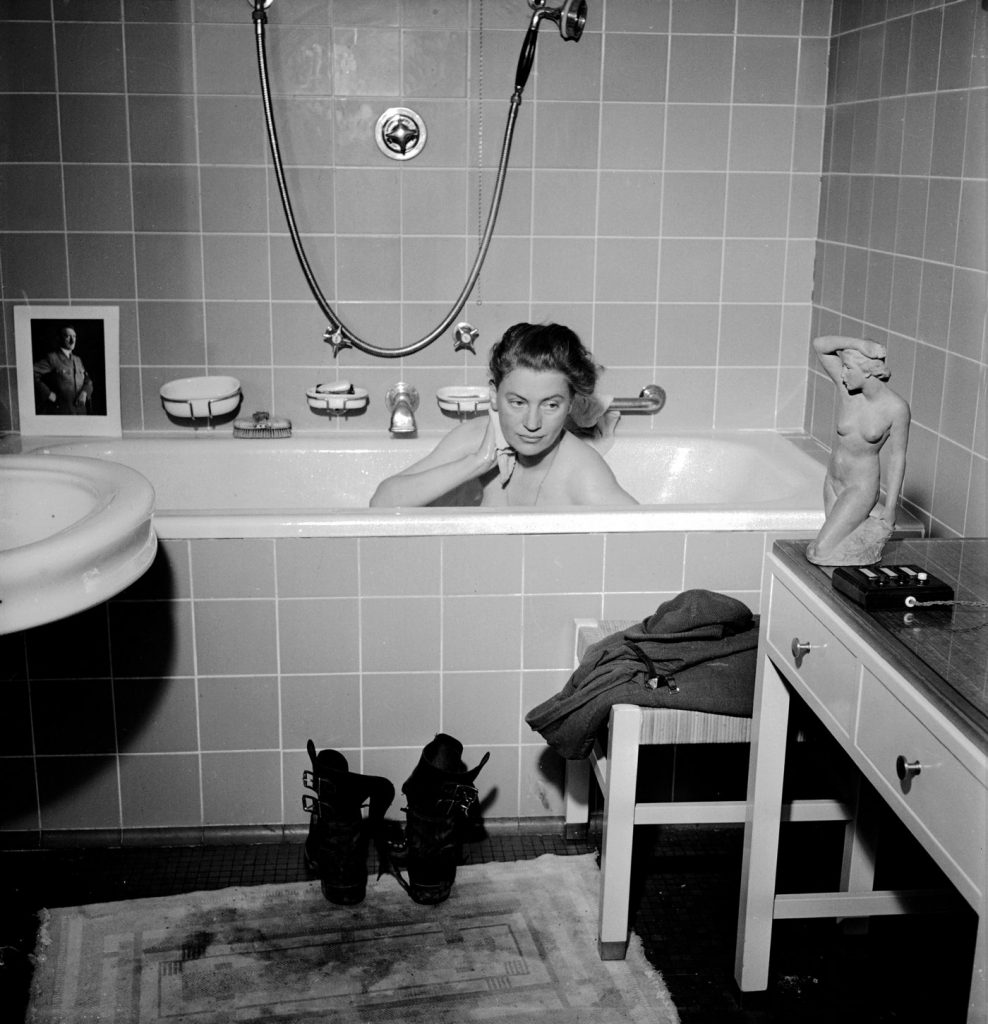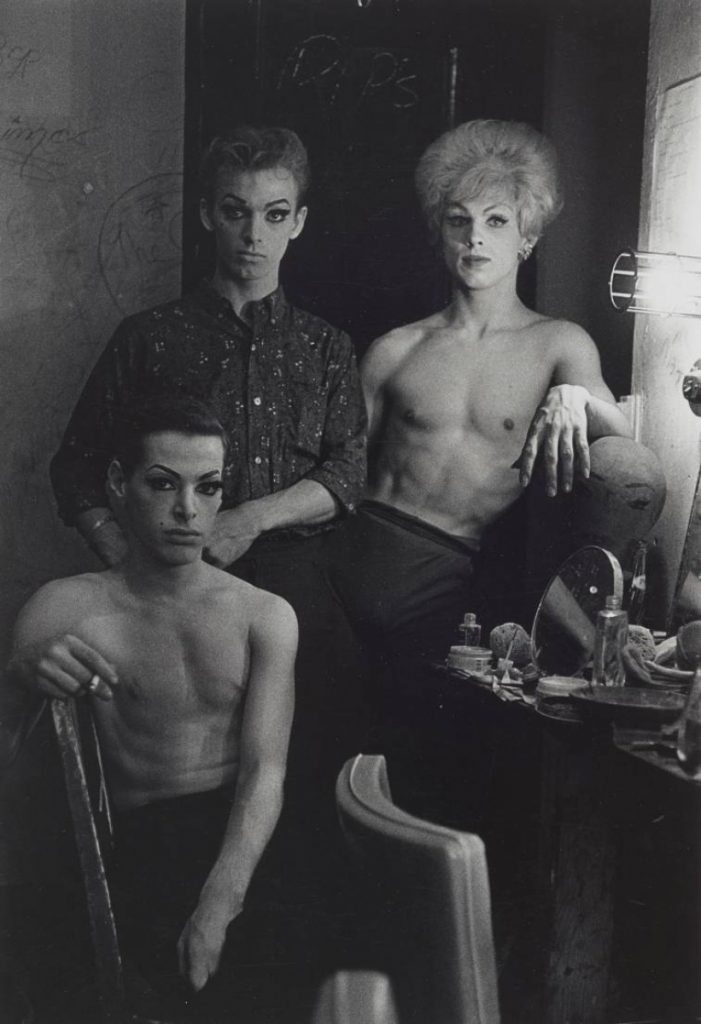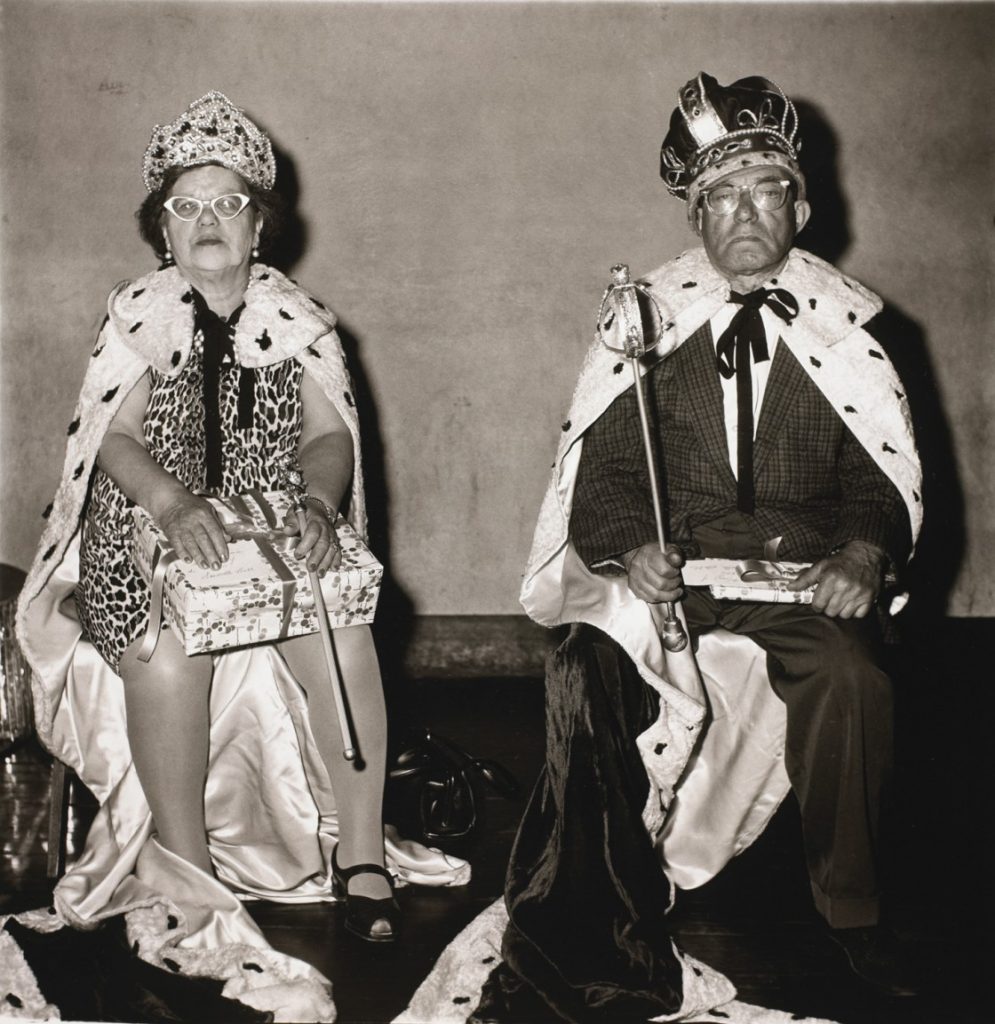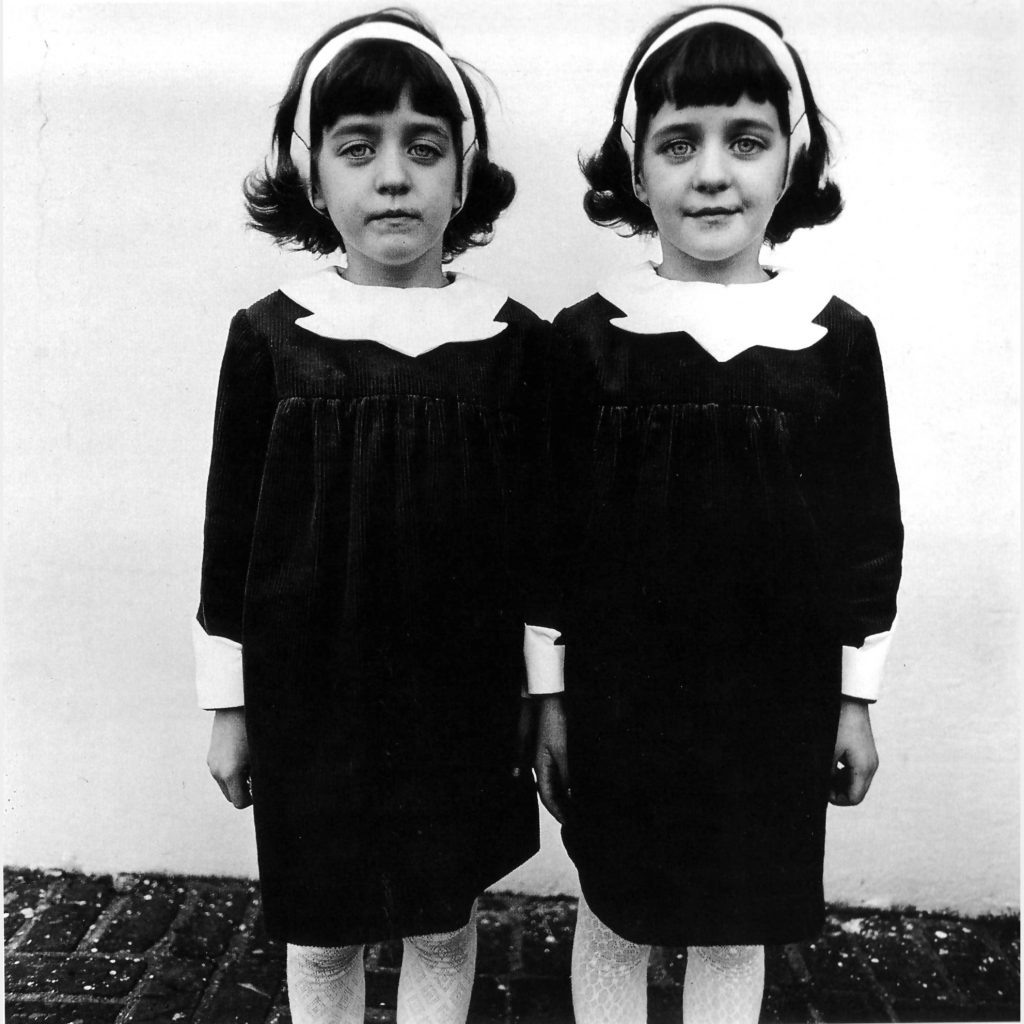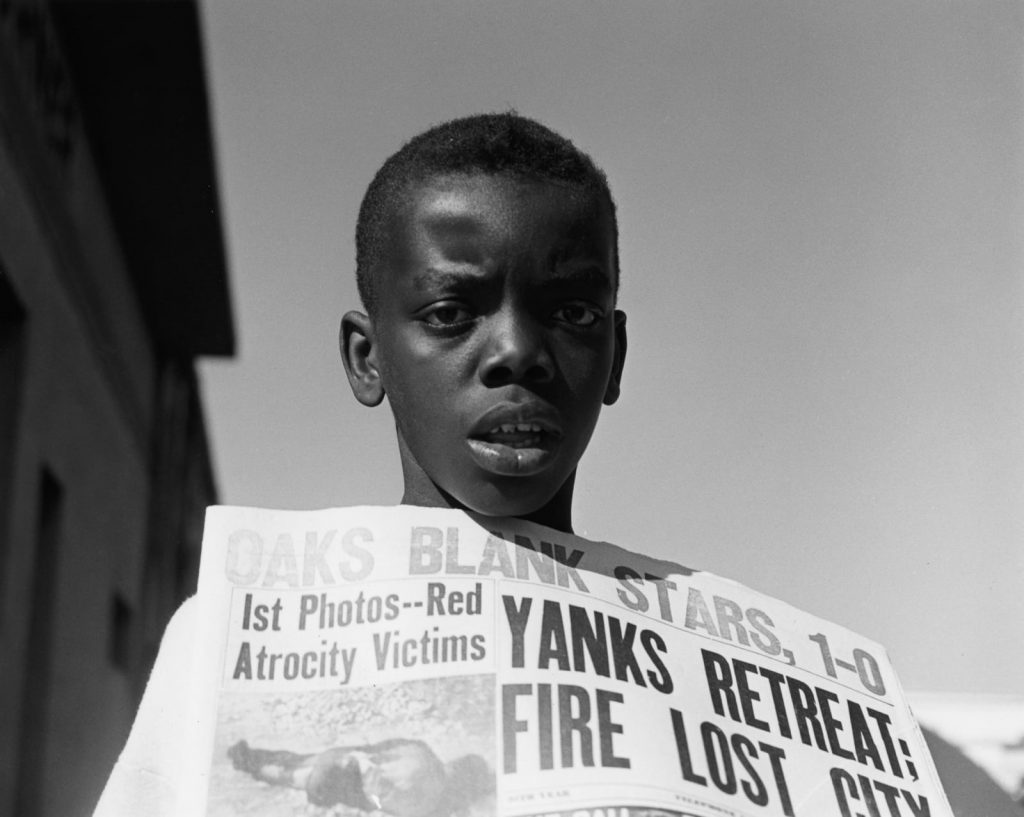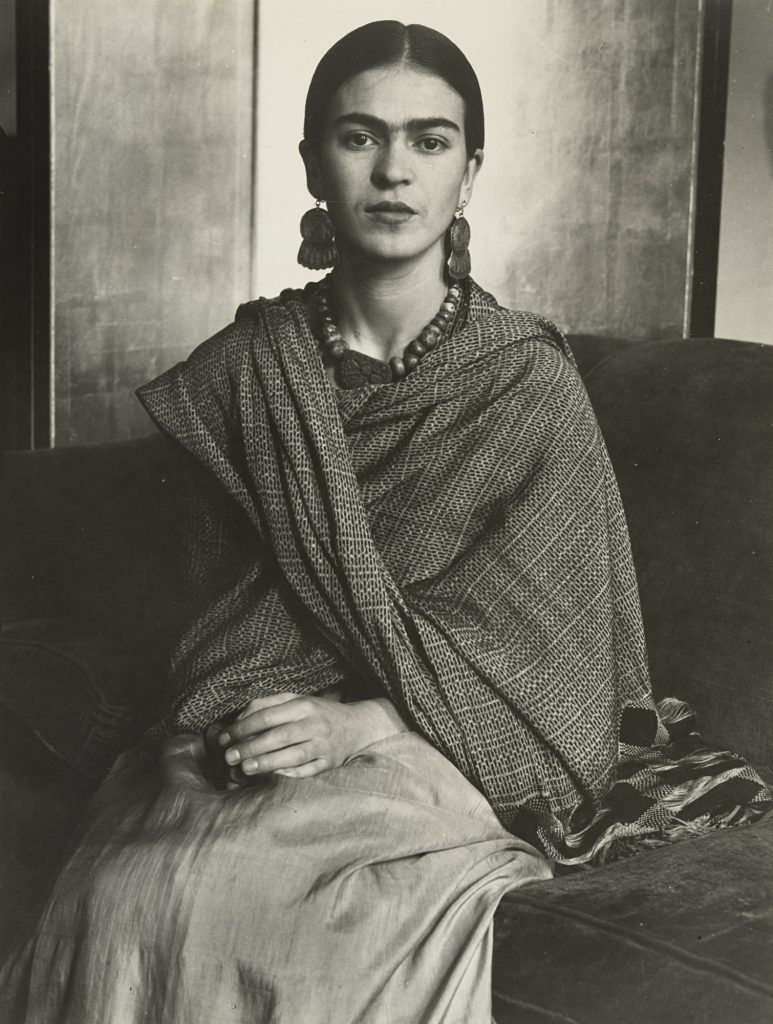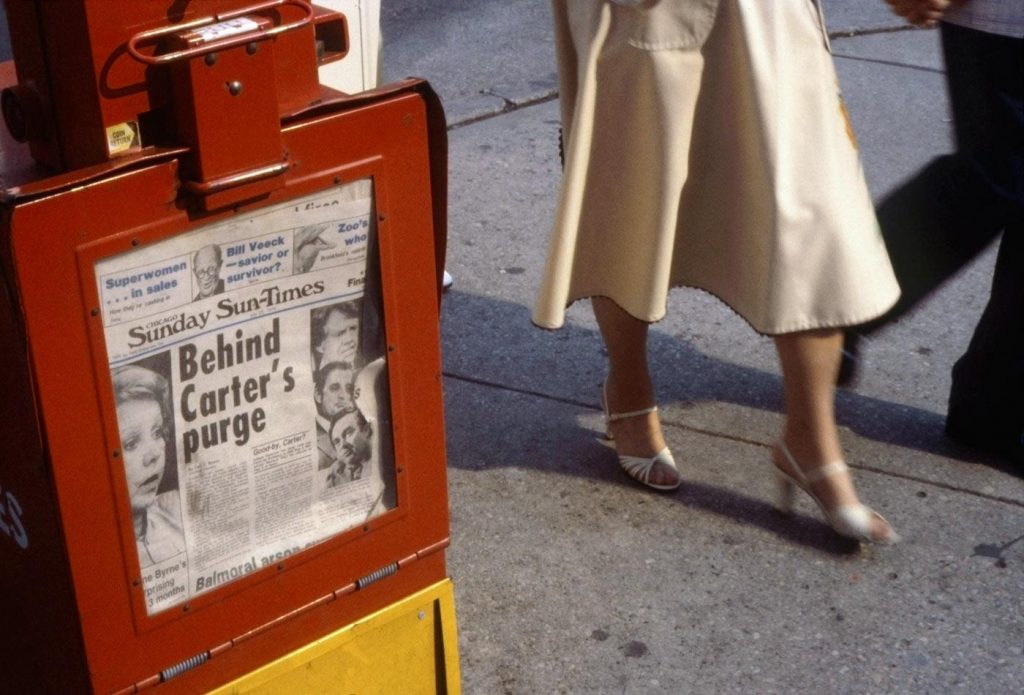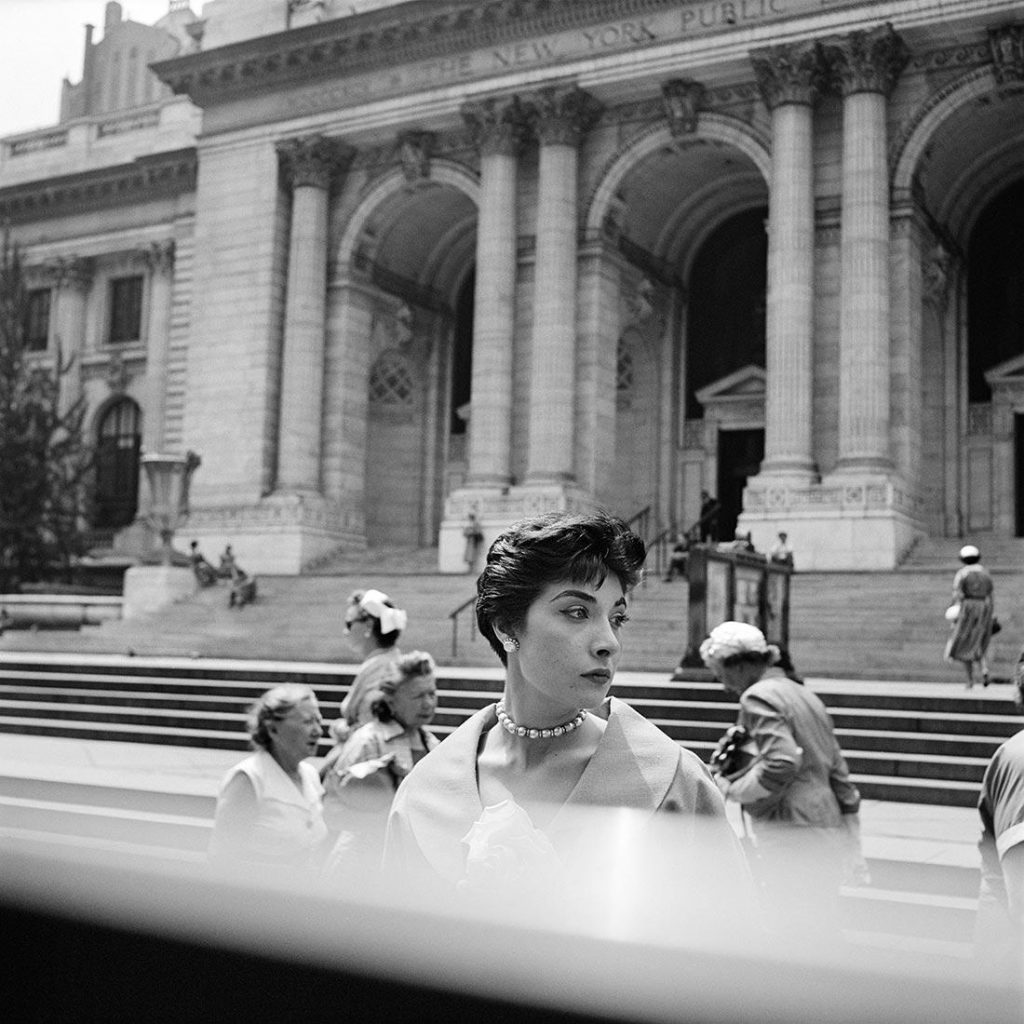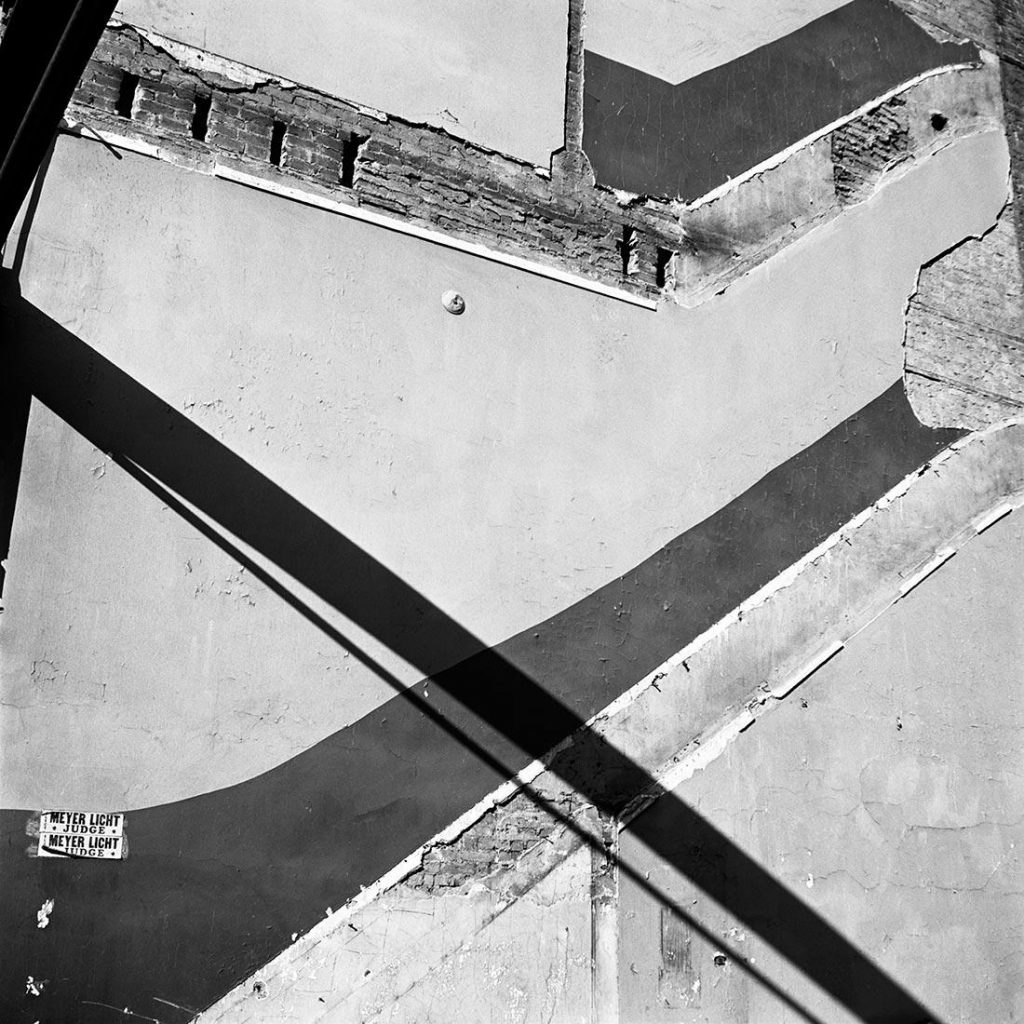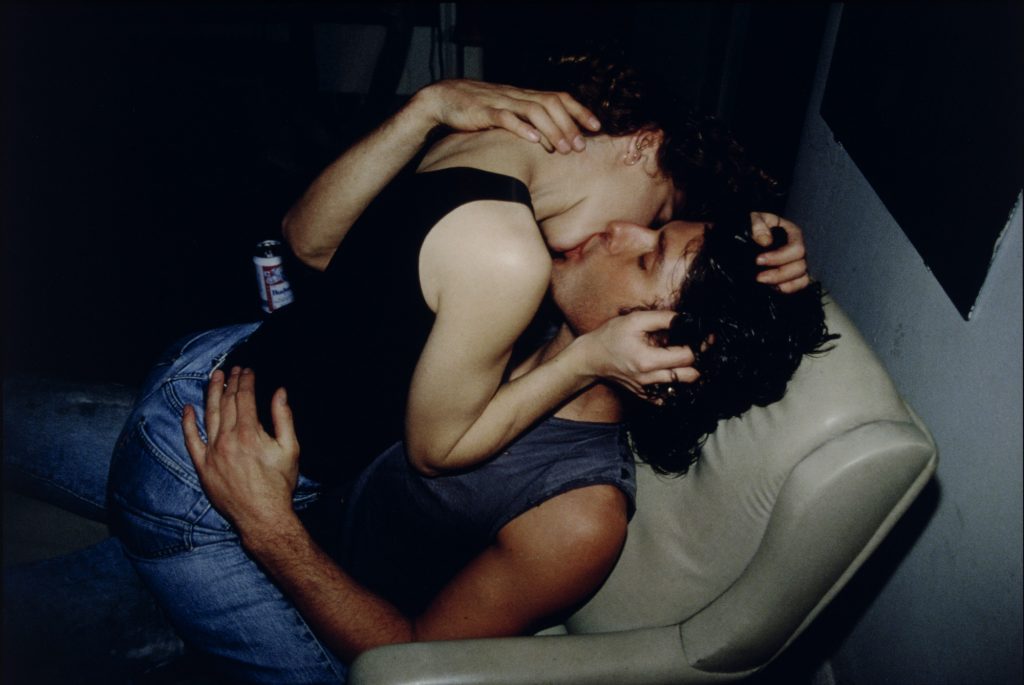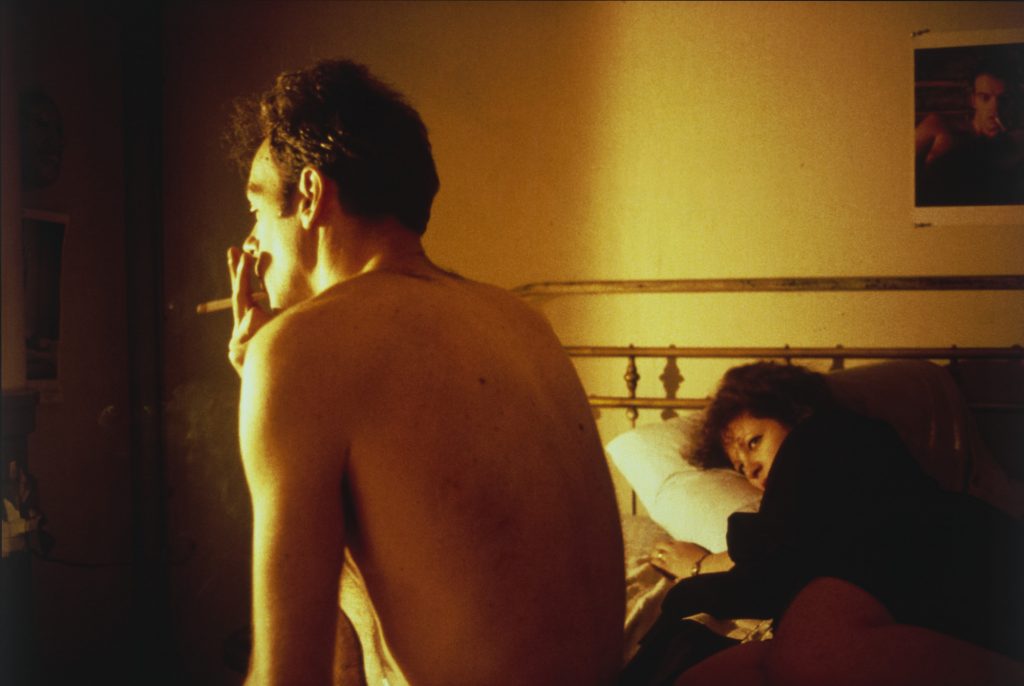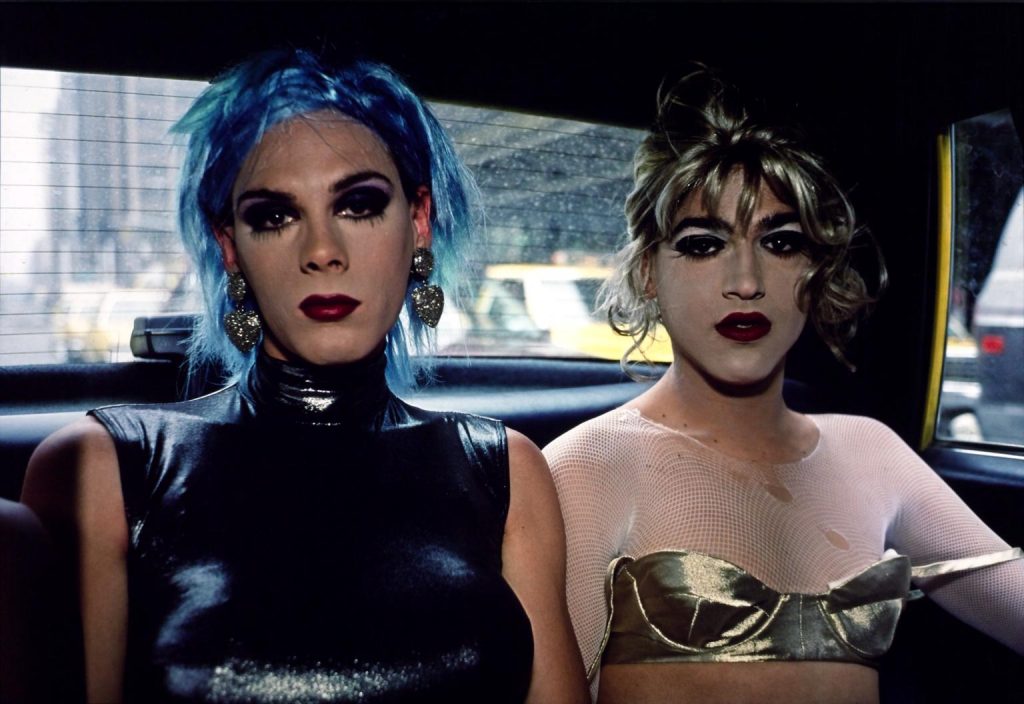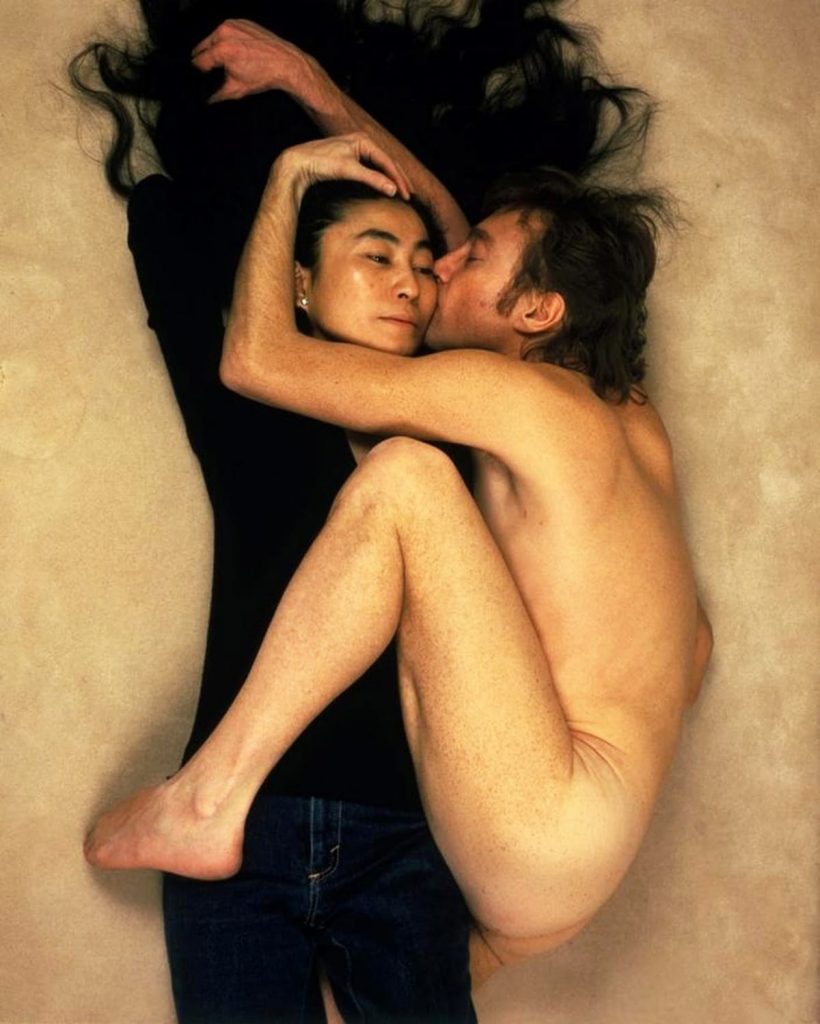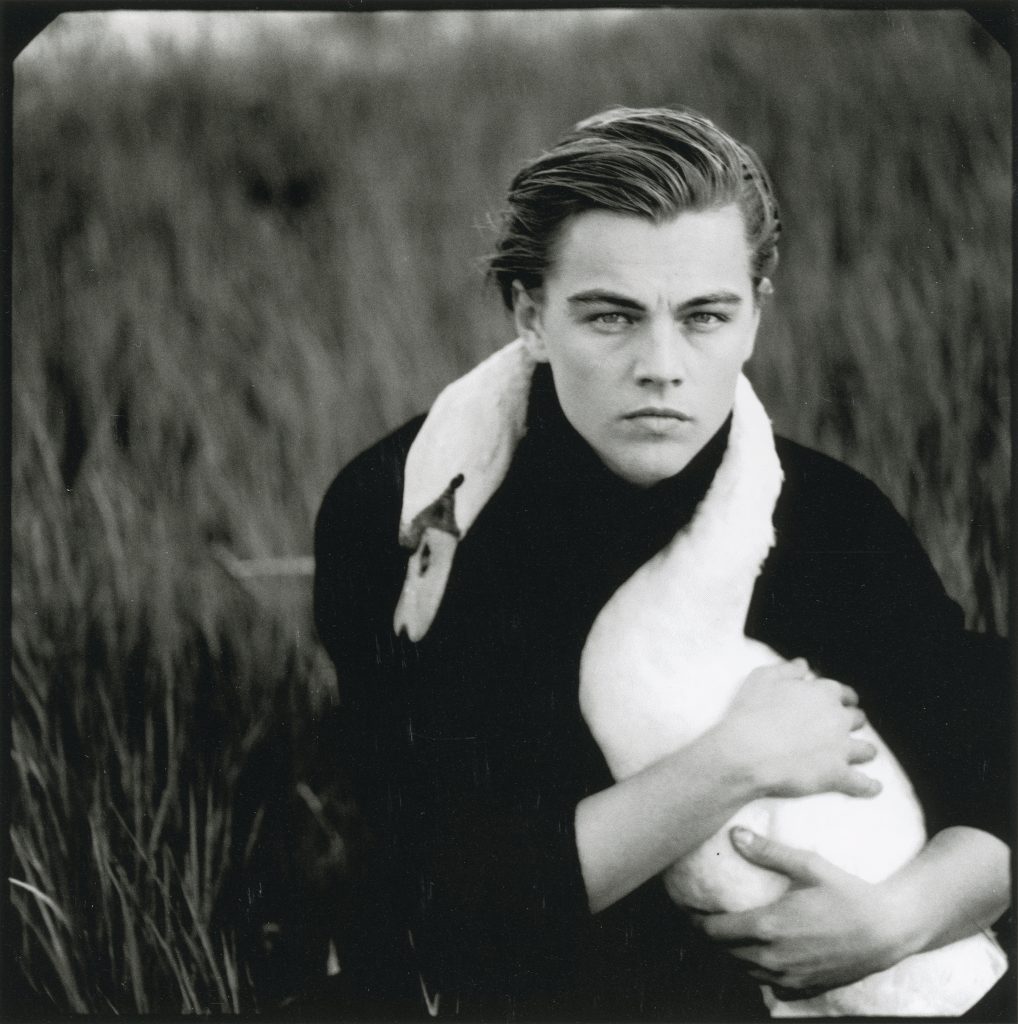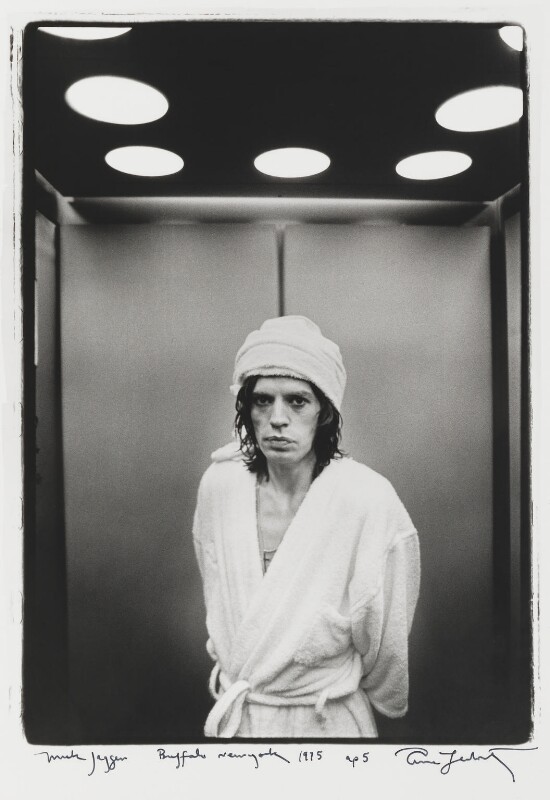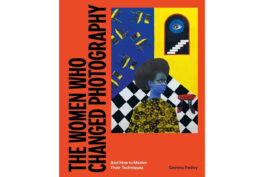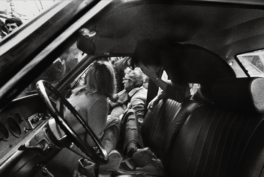Summary
- Julia Margaret Cameron was a Pre-Raphaelite photographer famous for her portraits infused with religious and allegorical themes.
- Claude Cahun was a nonconformist French Surrealist photographer.
- Dorothea Lange is best known for her work documenting the social consequences of the Great Depression.
- Tina Modotti was an Italian photographer devoted to portraying the working class and Indigenous Mexican culture.
- Germaine Krull was a German avant-garde pioneer in photojournalism.
- Ilse Bing was a German photojournalist who distinguished herself by using a Leica camera and unique framing.
- Margaret Bourke-White, the first female American photojournalist, immortalized the most important events of her time.
- Lee Miller was a famous fashion photographer turned war correspondent during WWII.
- Diane Arbus was acclaimed for her black-and-white pictures of New York City and its unique citizens.
- Imogen Cunningham was an American photographer famous for her botanical and street photography.
- Vivian Maier was a nanny, posthumously recognized as one of the greatest street photographers.
- Nan Goldin is known for her intimate portrayals of American society, the opioid epidemic, and LGBTQ+ communities.
- Annie Leibovitz is a contemporary American photographer best known for her iconic portraits of celebrities.
1. Julia Margaret Cameron – It Started With a Gift
Julia Margaret Cameron (1815–1879) was a British photographer considered one the most important portraitists of the 19th century.

Female photographers: Henry Herschel Hay Cameron, Julia Margaret Cameron, 1870, The Metropolitan Museum, New York, NY, USA. Wikimedia Commons (public domain).
She started her journey in photography relatively late in life, at the age of 48, after receiving a camera as a gift from one of her children. Cameron established herself on the Isle of Wight, where she created the portraits of several notable figures, such as the naturalist Charles Darwin (1809–1882) and the philosopher Thomas Carlyle (1795–1881). Actually, many of them were her neighbors! Nonetheless, she was also interested in photographing her family, servants, and the locals.
Cameron is famous for her ethereal, sensitive portraits that adopted religious, historical, and allegorical themes often met in literature, mythology, and Christian stories. She often asked her subjects to dress as historical or Biblical figures (children were usually dressed as angels). Cameron used a soft focus and long exposure to obtain the dream-like effect characteristic of her work. As it happens, the Pre-Raphaelites liked her more than the other Victorian photographers.
2. Claude Cahun – Under This Mask, Is Another Mask
Famous for compelling self-portraits, Claude Cahun (1894–1954) was a French Surrealist photographer, writer, and sculptor. The nonconformist photographer often addressed issues concerning self-identity, gender, and the subconscious mind.
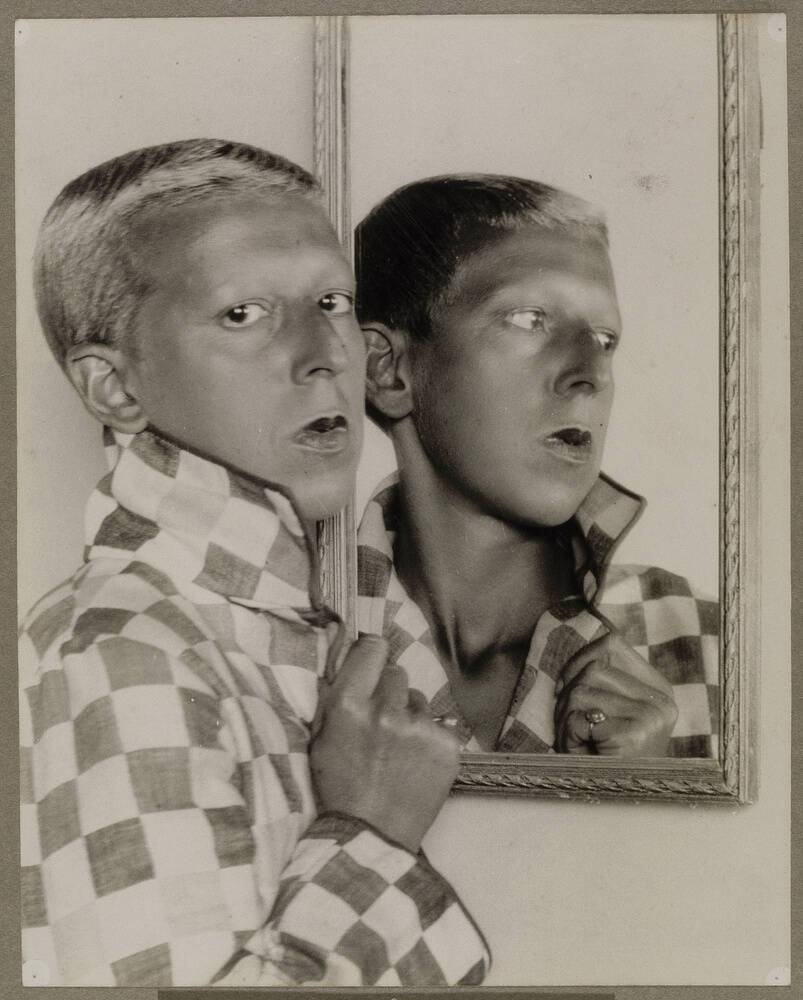
Female photographers: Claude Cahun, Self-portrait, 1929, Musée d’Arts, Nantes, France. Culture Gouv Fr.
Born Lucy Schowb to a prominent Jewish family, Cahun adopted the gender-neutral pseudonym in her early adulthood. Together with her lover—and step-sister—French artist Marcel Moore (1892–1972), they settled in Paris. There, Cahun collaborated with famous names in the Surrealist art scene, such as one of the movement’s founders, André Breton (1896–1966).
The couple moved to Jersey in 1937, near the coast of France. There, the artist worked as an activist and propagandist but had little contact with the outside world. During World War II, Cahun and Moore designed anti-German fliers containing criticism of the crimes of Nazism. They strategically placed the pamphlets at German events organized on their island, where the soldiers could easily find them. In 1944, both women were imprisoned and sentenced to death while most of their work was destroyed. Fortunately, the island was liberated by the Allies a year later, and they managed to escape their sentence.
Cahun used techniques of doubling and reflection in their work. In most of the self-portraits, Cahun calls into question the standards of beauty and gender by posing with a shaved head, staring unapologetically, directly into the camera. Cahun’s epicene appearance transpires through their work, generally regarded as an intimate form of expression. Several principal motifs emerge in the artist’s photographs, such as hair, hands, and, later, organic elements. This goes unrecognized most of the time, but Cahun and Moore collaborated frequently on their projects.
3. Dorothea Lange – Documenting the Great Depression
Dorothea Lange (1895–1965) is considered to be among the most significant documentary female photographers and photojournalists of the 20th century. She is best known for her work during the Great Depression (1929–1933), which stressed the importance of the social consequences of the economic crisis.

Female photographers: Paul S. Taylor, Dorothea Lange in Texas on the Plains, c. 1935. Wikimedia Commons (public domain).
Lange started as a portrait photographer in San Francisco. By the 1930s, she developed an interest in documenting rural California, the Southwest, and the South, for the Resettlement Administration in the US (created during the Depression-era to raise awareness about the struggling farmers).
Her photograph of 32-year-old Florence Owens Thompson with her children, Migrant Mother, Nipomo, California (1936), was widely circulated in magazines and newspapers, becoming an icon of the period. The photographer used to portray the plight of her subjects in an emotive light.
In 1941, Lange was awarded the Guggenheim Fellowship for photography. A year later, in mid-World War II, the US Office of War Information, a propaganda agency, assigned her to photograph and document the internment of Japanese Americans. She created pictures that condemned the US authorities for the unfair conditions they were exposed to. The photographs were thus impounded by the government during the war.
Towards the end of her life, Lange traveled with her husband to Asia and took photographs for LIFE magazine in the US and Europe.
4. Tina Modotti – In Love With Mexico
Another protagonist of female photographers: Tina Modotti (1896–1942) was an Italian-born photographer, model, actor, and political activist. Preferring high-quality images and impressive close-ups, she wasn’t afraid to experiment with different techniques in her work.
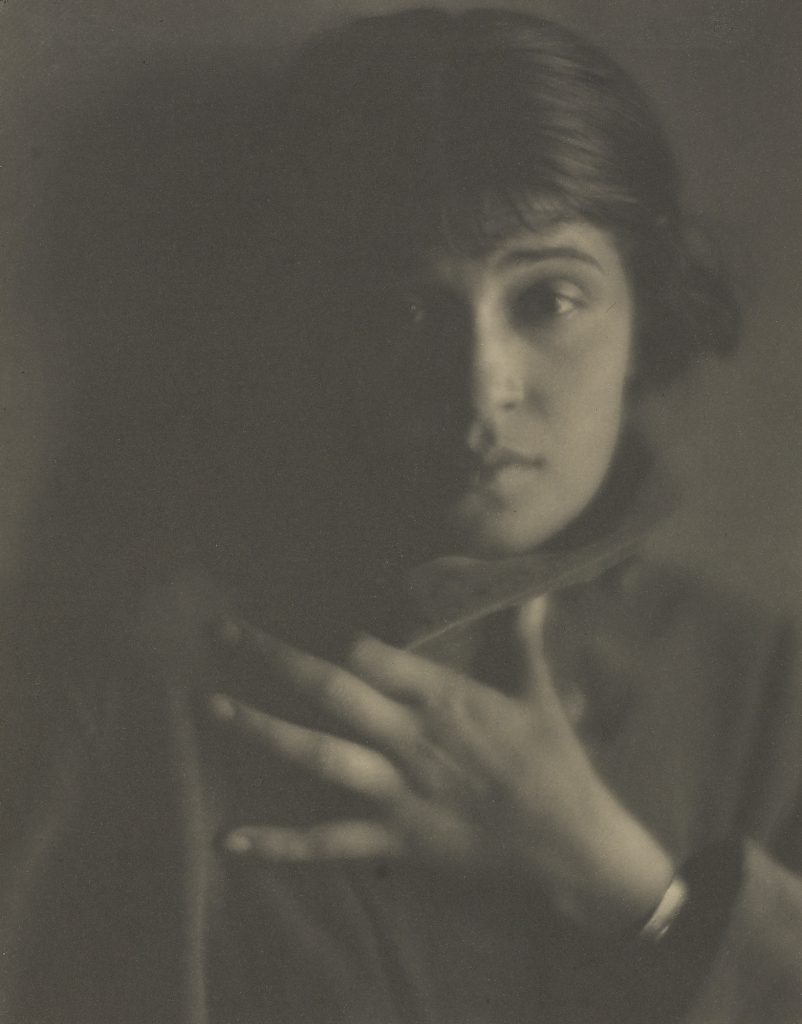
Female photographers: Edward Weston, Tina Modotti, Glendale, 1921. Wikimedia Commons (public domain).
After emigrating to the US in 1923, Modotti moved with her lover, photographer Edward Weston (1886–1958), to Mexico City. There, she opened a studio and joined the Communist Party. Speaking of which, she was romantically involved with some of its leaders!
Modotti worked on capturing the city and its people in all their splendor. She took the portraits of many notable figures, including the Mexican artist Diego Rivera (1886–1957) and Surrealist painter Frida Kahlo (1907–1954). Her photographs bring attention to the working class and Indigenous culture. Seven years later, Modotti was exiled from Mexico for her left-leaning political beliefs.
Modotti eventually joined the Soviet Communist Party in Moscow and gave up photography altogether in 1931. Unlike other artists, she was more concerned with her political struggle, which ultimately prevailed over her artistic interests.
5. Germaine Krull – Big Appetite for Controversy
Born in Wilda-Posen, East Prussia, Germaine Krull (1897–1985) was an avant-garde photographer, a pioneer in photojournalism, and a political activist.
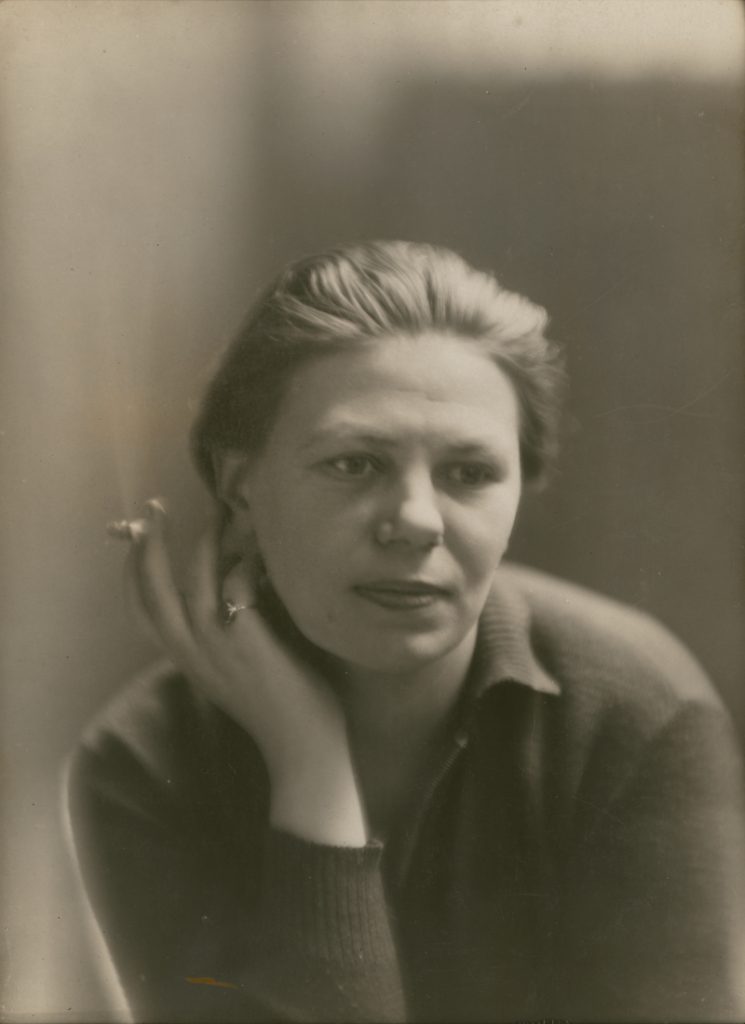
Female photographers: Germaine Krull, Autoportrait, Paris, 1927, Museum Folkwang, Essen, Germany. Aware Women Artists.
In 1928, the French VU magazine hired Krull. She collaborated with contemporaries like André Kertész (1894–1985) and Eli Lotar (1905–1969) in creating a more intimate form of reportage, defined by powerful close-ups. During this period, she developed her published books and solo portfolios, including the Études de nu (1930) and the Metal (1928) collection, compiling various mighty iron objects, such as railways, the Eiffel Tower, and power generators. Three years later, Krull developed the first photo novel together with the Belgian writer Georges Simenon (1903–1989), titled La Folle d’Itteville (1931).
Additionally, she experimented with double exposure and photomontage. She was also part of the Neues Sehen or Neue Optik (New Vision) photography, a different direction in photography based on discovering the possibilities of unconventional techniques in the medium.
In 1941, Krull joined the Free France cause. After the end of World War II, she moved to Southeast Asia and became the director of Oriental Hotel Bangkok. Eventually, she converted to Buddhism and lived a secluded life among Tibetan monks in India.
6. Ilse Bing – Queen of the Leica
Ilse Bing (1899–1998) was born in Frankfurt, Germany. She started as a photojournalist for a German magazine and, in 1930, moved to Paris to concentrate full-time on photography after giving up her studies in Art History. Read the story of the next representative of female photographers.
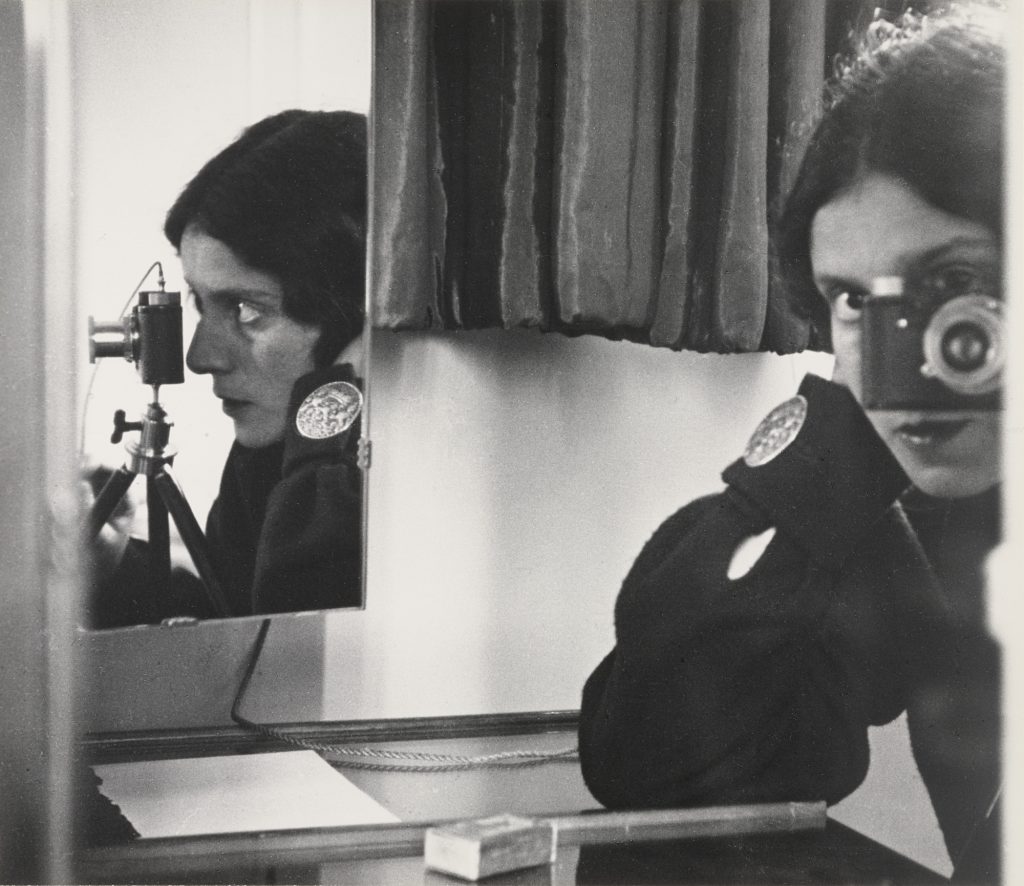
Female photographers: Ilse Bing, Self-Portrait in Mirrors, 1931, Museum of Modern Art, New York, NY, USA. Museum’s website.
Bing focused on her career as a freelancer for publications such as Le Monde Illustre, Vogue, VU, and the American Harper’s Bazaar. Nevertheless, besides her commercial work, she established herself as an avant-gardist and was heavily influenced by the Bauhaus style, which directed her toward modernist photography.
Incidentally, her camera was a 35mm hand-held Leica camera. Thus, within a few years, Bing earned her reputation as the “Queen of Leica.”
When World War II broke out, as Jews, Bing, and her husband were sent to separate internment camps in the south of France. They rejoined in Marseilles and, with the help of a fashion editor from the US that Bing collaborated with, the couple was able to leave Europe in 1941 for New York City. Some of her most important prints were lost because she couldn’t afford the customs duty for all of them when they finally arrived from France. She returned to Paris a couple of times after the war but decided to end her work as a photographer and dedicated herself to poetry, line drawings, and collages.
Bing oftentimes chose urban subjects, capturing them at vertiginous angles. She always developed the negatives herself and worked without additional lighting. All her photographs convey an intuitive and spontaneous dynamism. Bing favored simplicity and worked graciously with light and shadow in various enticing environments, representative of the cities and era she lived in.
Even though her work was influenced by the leading artistic voices of her time, she brought many innovations to the photography sphere, being among the first to use techniques such as solarization, electronic flash, or taking nighttime photographs. Her work was present at many significant exhibitions of the 20th century, including MoMA’s first survey exhibition of photography, Photography 1839–1937.
7. Margaret Bourke-White – Some Pictures Are Worth More Than a Thousand Words
Margaret Bourke-White (1904–1971) was the first female American photojournalist. She traveled around the world and immortalized some of the biggest and most important historical events of her time.
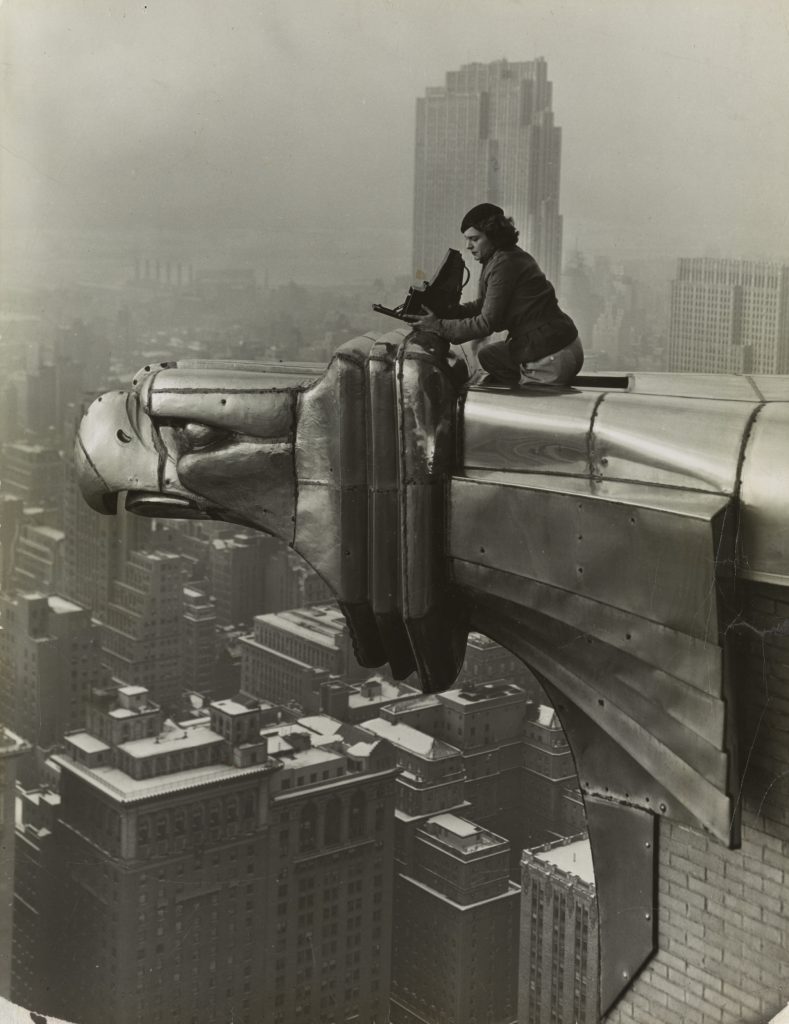
Female photographers: Oscar Graubner, Margaret Bourke-White Making a Precarious Photo From the Chrysler Building, 1934, The LIFE Images Collection/Getty Images, Los Angeles, CA, USA. The New York Times.
Bourke-White opened her first studio in Cleveland, OH, where she experimented with industrial photography. In 1929, Bourke-White was hired by Fortune as their first staff photographer. Working there, she was allowed to document the Soviet industry.
Moreover, like her contemporaries, she created work regarding the human side of the Great Depression. Some of it made it into the book You Have Seen Their Faces (1937), with text by the novelist Erskine Caldwell (1903–1987). At the time, LIFE magazine was only being conceived – and, of course, she was offered a position among the first four photographers hired. She covered the Korean War (1950–1953) for the publication.
In 1941, Bourke-White was the only Western photographer in Moscow to photograph Josef Stalin (1878–1953), leader of the Communist Party, during the German invasion of the Soviet Union. A year later, she witnessed the Air Corps bombing missions. At the end of the war, assisting Gen. S. Patton (1885–1945) of the US forces, she covered the liberation of the Erla and Buchenwald concentration camps in Germany.
However, she did not stop there. Bourke-White traveled to Asia to record the Partition of India, photographing Indian leader Mohandas Gandhi (1869–1948).
Bourke-White is one of the most accomplished and outstanding photojournalists, being in the right place at the right time, all the time!
8. Lee Miller – From Fashion Covers to the Battlefield
Elizabeth “Lee” Miller (1907–1977) was an American model and one of the female photographers recognized for her work at Vogue and during World War II.
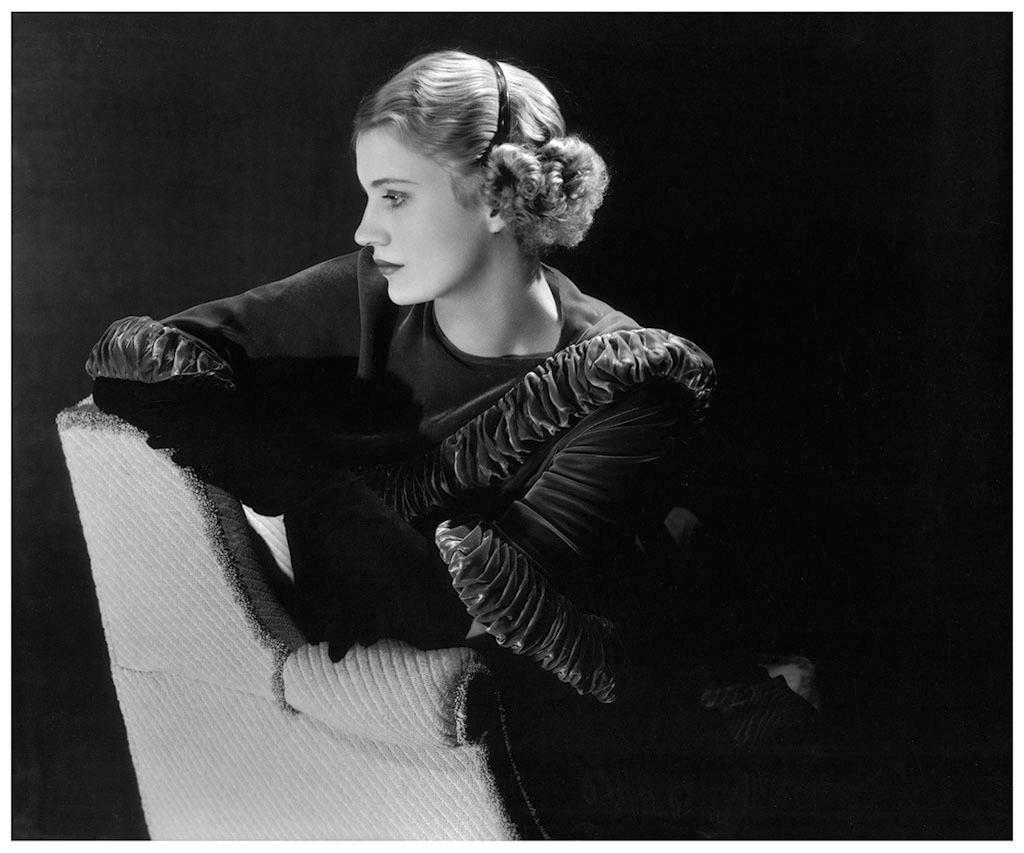
Female photographers: Lee Miller, Self Portrait, 1932, National Galleries Scotland, Edinburgh, UK. WikiArt.
In the 1920s, Miller achieved a successful career as a model in New York City before moving to Paris, where she became Man Ray’s (1890–1976) assistant, muse, and lover. Soon, she would open her own studio and collaborate with Ray on his projects. Being exposed to Surrealism, Miller embraced many of her lover’s methods, such as solarization (the effect of tone reversal in photographs).
Miller returned to New York City in 1932 and opened her second studio, earning a living from advertising photography and portraits. She contributed to Vogue, both as a model and a photographer.
In the following years, Miller traveled across Europe and lived in Cairo and London. As a war correspondent, she photographed field hospitals in Normandy, the Liberation of Paris, the death camps of Dachau and Buchenwald, and even Hitler’s apartment in Munich.
After the war, Miller suffered from depressive episodes and was diagnosed with PTSD. In 1947, she married her second husband, British Surrealist painter Roland Penrose (1900–1984). Miller helped him write biographies on Man Ray and Pablo Picasso (1881–1973), one of her friends. Incidentally, during the 1940s and 1950s, MI5 investigated her for being a Soviet spy.
9. Diane Arbus – Appreciation of the Different
Diane Arbus (1923–1971) was one of the women photographers born in the US. She is known for her black-and-white portraits and pictures of New York City with its unique citizens.
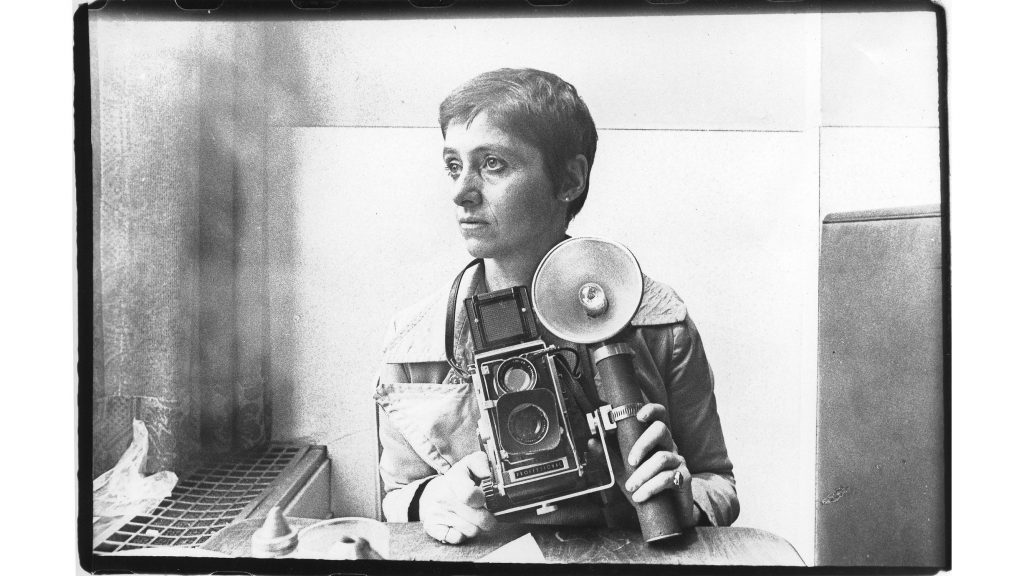
Female photographers: Diane Arbus, Self-Portrait, c. 1968. The Times.
Arbus was born into a wealthy family that allowed her to develop her artistic talents, shielded from the impacts of the Great Depression. Together with her husband, actor Allan Arbus (1918–2013), she worked in fashion and advertising photography for magazines like Vogue and Harper’s Bazaar.
By the 1950s, Arbus decided to focus on her own projects. She subsequently took her camera around the streets of New York City to capture the intimate lives of its people in various locations, such as bars, hotels, or even the morgue!
Typically, Arbus rarely cropped her photographs; thus leaving some irregular borders surrounding the pictures. She allowed her subjects to be themselves in front of her medium-format camera, admiring their sincerity and confidence. Arbus was featured at MoMA together with other famous artists of her time in the influential exhibition New Documents (1967). At the age of 48, after dealing with depression throughout her life, she committed suicide.
10. Imogen Cunningham – Attention to Detail
Famous for her nudes, botanical photographs, and industrial landscapes, Imogen Cunningham (1883–1976) was one of the American female photographers. In her work, she is preoccupied with attention to detail and the contrast between light and shadow.
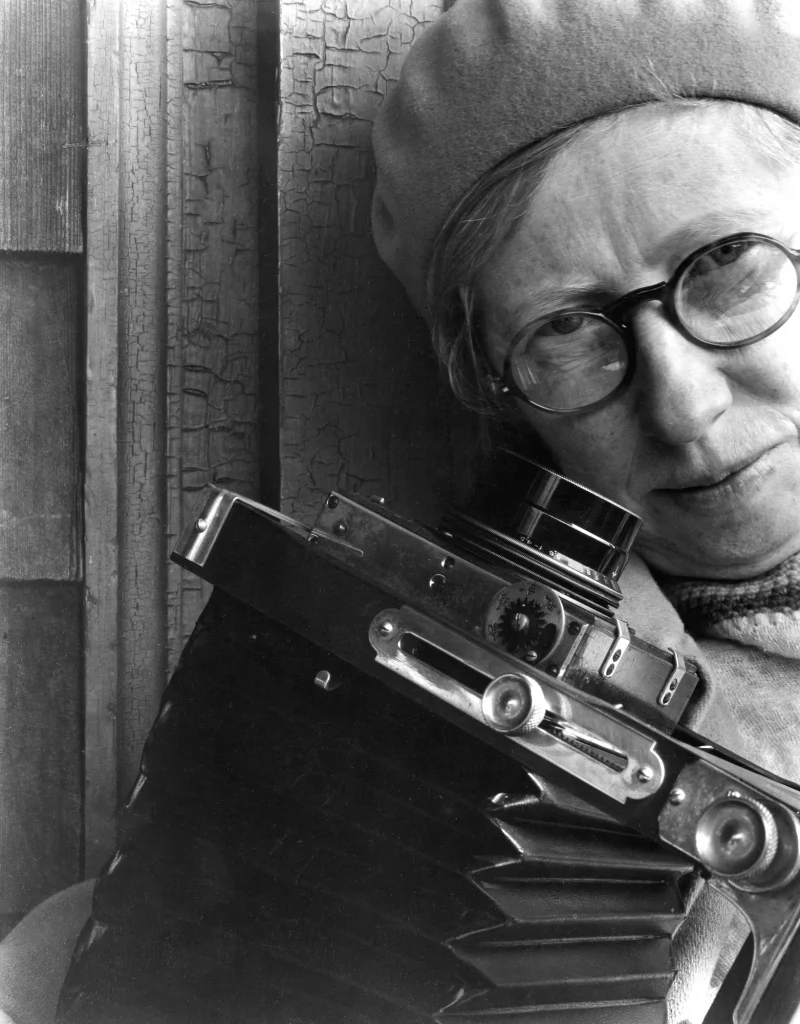
Female photographers: Imogen Cunningham, Self-Portrait with Camera, late 1920s. Artist’s website.
Cunningham studied chemistry in the US and fine arts in Germany before she returned to Seattle, US. Moving to San Francisco, she worked with photographers like Dorothea Lange (1895–1965) and Edward Weston (1889–1958). Cunningham explored many techniques in the photographic medium, including double exposure and montage printing. Her evocative images that capture succulent botanical still lives share certain similarities to Georgia’s O’Keeffe’s (1887–1986) paintings. Cunningham’s pictures were so highly detailed that many scientists used them for their studies. In the 1920s, she spent two years diligently studying the magnolia flower.
Cunningham was a member of the notable Group f/64, created in 1932 by an association of Californian photographers. They promoted a new direction in photography that focused on sharp and clear images, opposite to Pictorialism.
In the 1940s, Cunningham developed a passion for street photography and was offered a position in the department of art photography at the California School of Fine Arts by her friend, American photographer Ansel Adams (1902–1984).
11. Vivian Maier – Nanny With a Secret
Believed to be only a nanny for almost 40 years, Vivian Maier (1926–2009) was, in fact, one of the greatest American street photographers. Her work, consisting of over 150,000 images produced during her lifetime, was discovered at an auction in 2007.
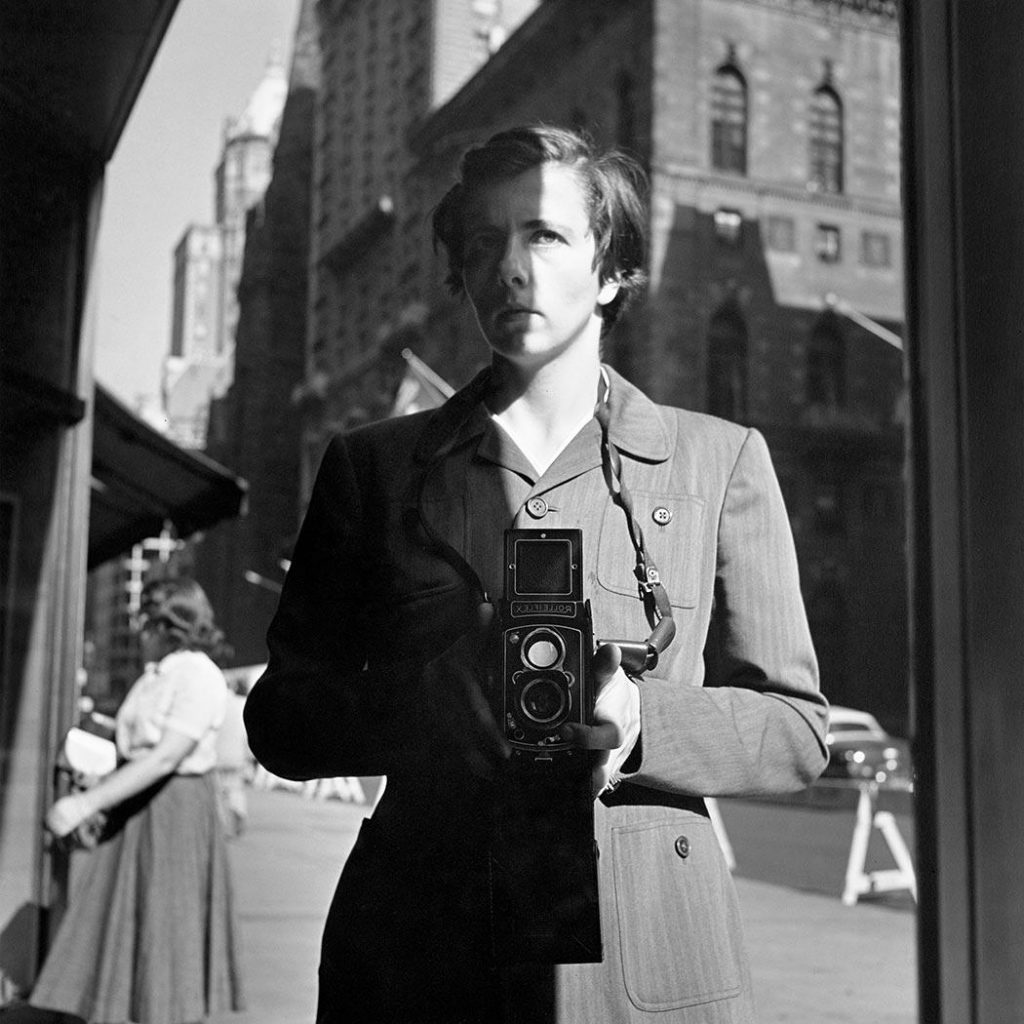
Female photographers: Vivian Maier, Self-Portrait, 1953, Maloof Collection and Howard Greenberg Gallery, NY, USA. Artist’s website.
Maier was fascinated by the architecture and people of the cities she spent her time in. She is most famous for her pictures of the streets of New York City and Chicago. Sometimes compared to Diane Arbus for her spontaneity, Maier took photographs of the seemingly most banal subjects and transformed them into artworks, compelling moments stopped forever in time.
John Maloof, Ron Slattery, and Randy Prow acquired some of Maier’s photographs in 2007. Many of her negatives were never developed. In 2009, Maloof shared Maier’s images in one of his blog posts, and soon after, her work gained a reputation at art museums worldwide.
Currently, Maier’s story is presented in the documentary Finding Vivian Maier (2013). Also, at the Chicago History Museum, her work was seen in the multimedia exhibition Vivian Maier: In Color until May 8, 2023.
12. Nan Goldin – Slice of Life
Nan Goldin (b. 1953) is one of the contemporary American women photographers. She is acclaimed for her intimate, authentic photographs documenting her life and her dear ones. In her work, she tackles sensitive issues of our times, such as the opioid epidemic, the HIV crisis, and the LGBTQ+ community.
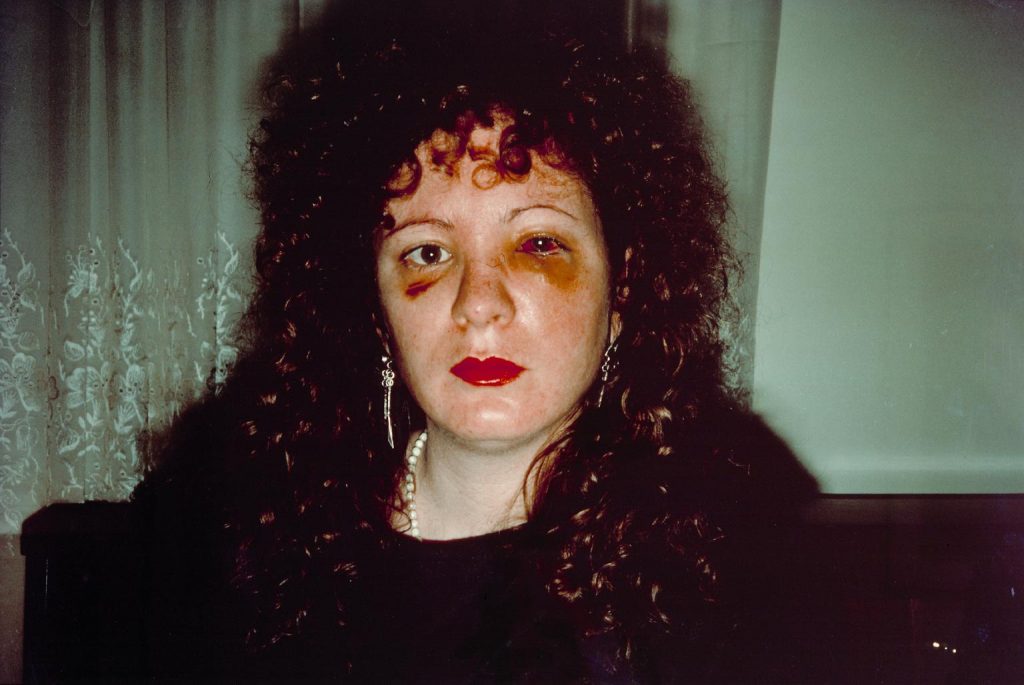
Female photographers: Nan Goldin, Nan One Month After Being Battered, 1984, Tate Modern, London, UK. Museum’s website.
In her late teens, Goldin moved to Boston to live with her friend David Armstrong (1954–2014), an American photographer. There, she experienced the gay and transgender community of the city. In her photographs, she is heavily influenced by Diane Arbus, who adopted similar motifs and themes. Goldin used to take her camera everywhere, capturing the so-called “slices of life” and underground culture.
In Ballad of Sexual Dependency (1980–1986), a 40-minute slideshow of 700 photographs set up on a musical background, Goldin encapsulated her life in the 1980s in New York City. The timeless, deeply personal record preserves her friends and lovers, many of whom were taken away by the AIDS crisis.
Her photographs are enticing, challenging, and raw. Goldin doesn’t shy away from the hard truths of life but faces them courageously by exposing the vulnerability that lies behind the acts of love, violence, and hardship she chooses to capture.
A few years ago, Goldin admitted she was recovering from an opioid addiction after being prescribed OxyContin for wrist pain. In 2019, she organized a series of global protests at art museums against the Sackler family, associated with Purdue Pharma, manufacturer of the opioid OxyContin.
13. Annie Leibovitz – Portraits of the People We All Know
Annie Leibovitz (b. 1949) is a contemporary American photographer, best known for her portraits of celebrities. Her work includes some of the most iconic photos of famous figures.
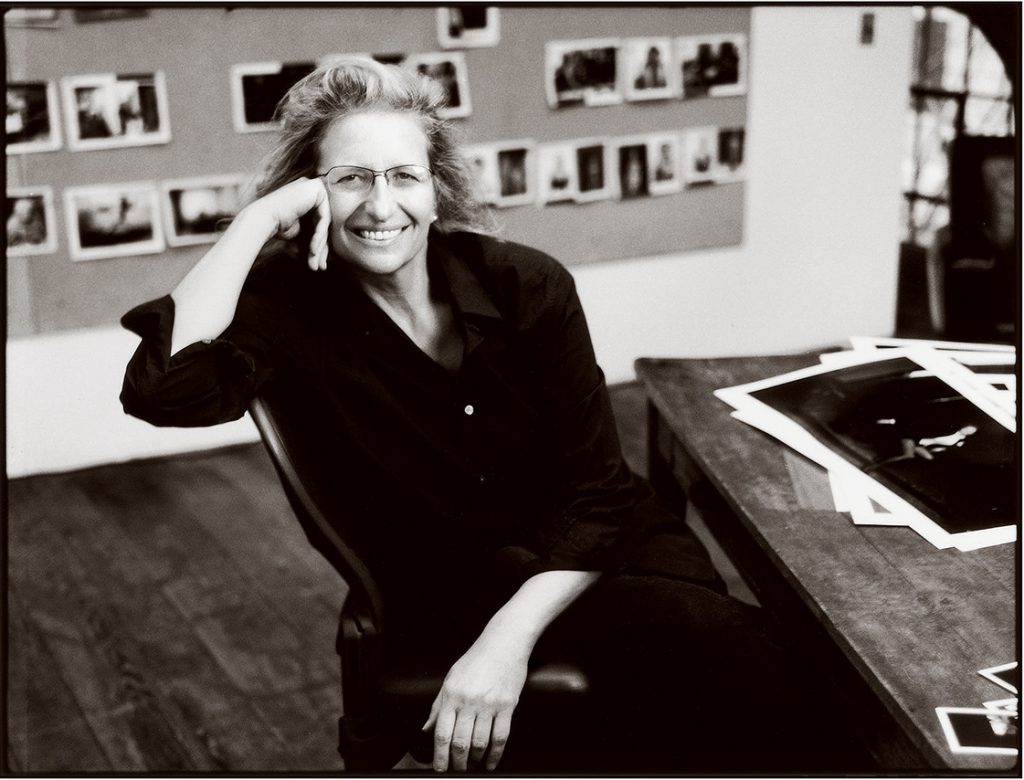
Female photographers: Paul Gilmore, Annie Leibovitz, 1977. The Eye of Photography.
Leibovitz attended the San Francisco Art Institute, where she realized she wanted to become a photographer. Her career began in 1970 when she became a photographer for Rolling Stone magazine. During her 10 years there, she took one of her most famous photographs of John Lennon and Yoko Ono only a few hours before Lennon was murdered.
What is interesting is she said she’d take her top off and I said, “Leave everything on”—not really preconceiving the picture at all. Then he curled up next to her and it was very, very strong. You couldn’t help but feel that he was cold and he looked like he was clinging to her. I think it was amazing to look at the first Polaroid and they were both very excited. John said, “You’ve captured our relationship exactly. Promise me it’ll be on the cover.” I looked him in the eye and we shook on it.
After leaving Rolling Stones, Leibovitz started working for Vanity Fair in 1983. Since then, her career has been thriving. She was the first woman portraitist to have her solo exhibition at the National Gallery in London. She creates incredible campaigns and photoshoots to this day.
Final Thoughts
These women photographers shaped the medium as we see it today, leaving their mark on the world. Nevertheless, it is noteworthy to mention that this list doesn’t include all the talented women photographers who should receive recognition as well for their efforts, such as Francesca Woodman, Helen Levitt, Tsuneko Sasamoto, Gerda Taro, Berenice Abbott, Homai Vyarawalla, and Lola Álvarez Bravo.
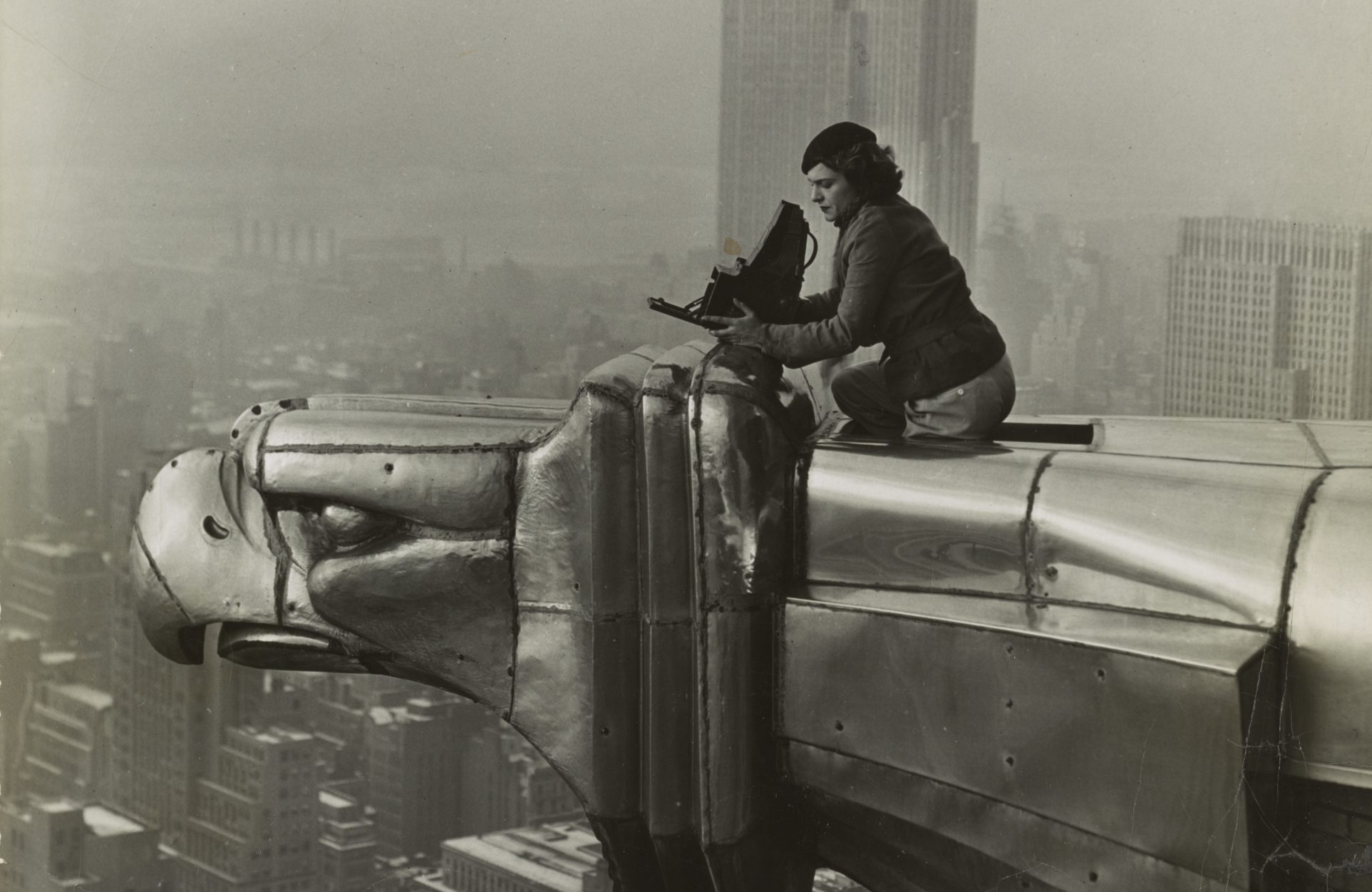
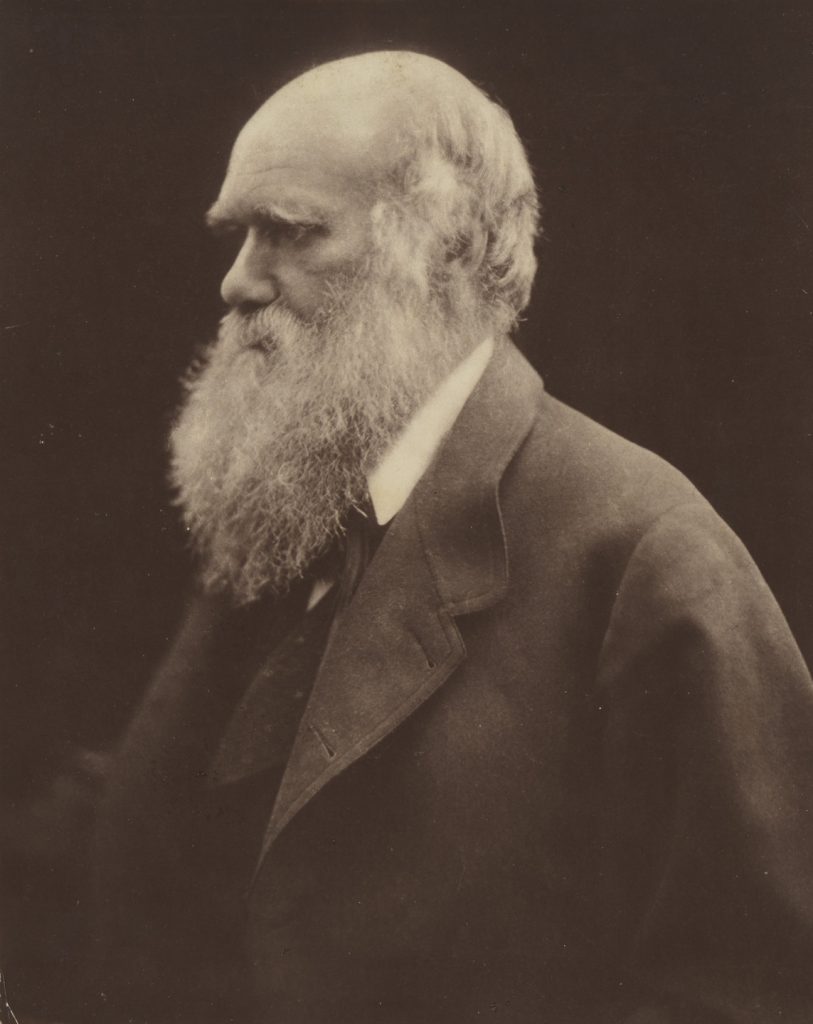
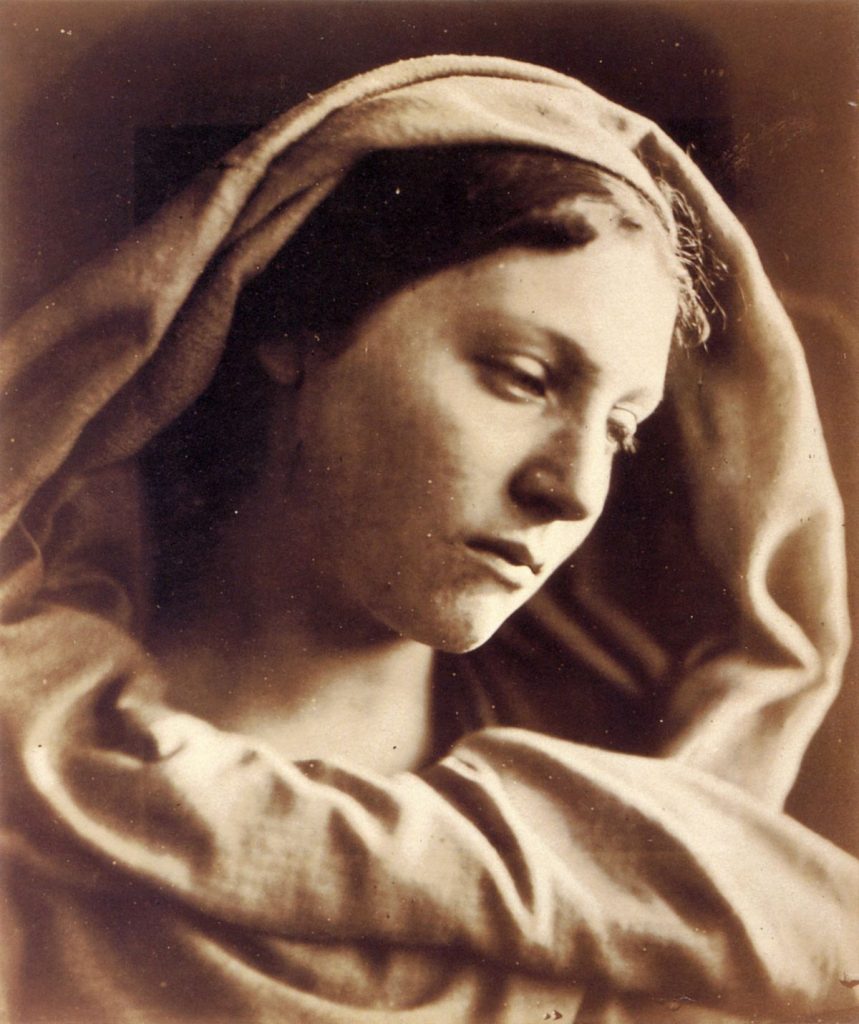
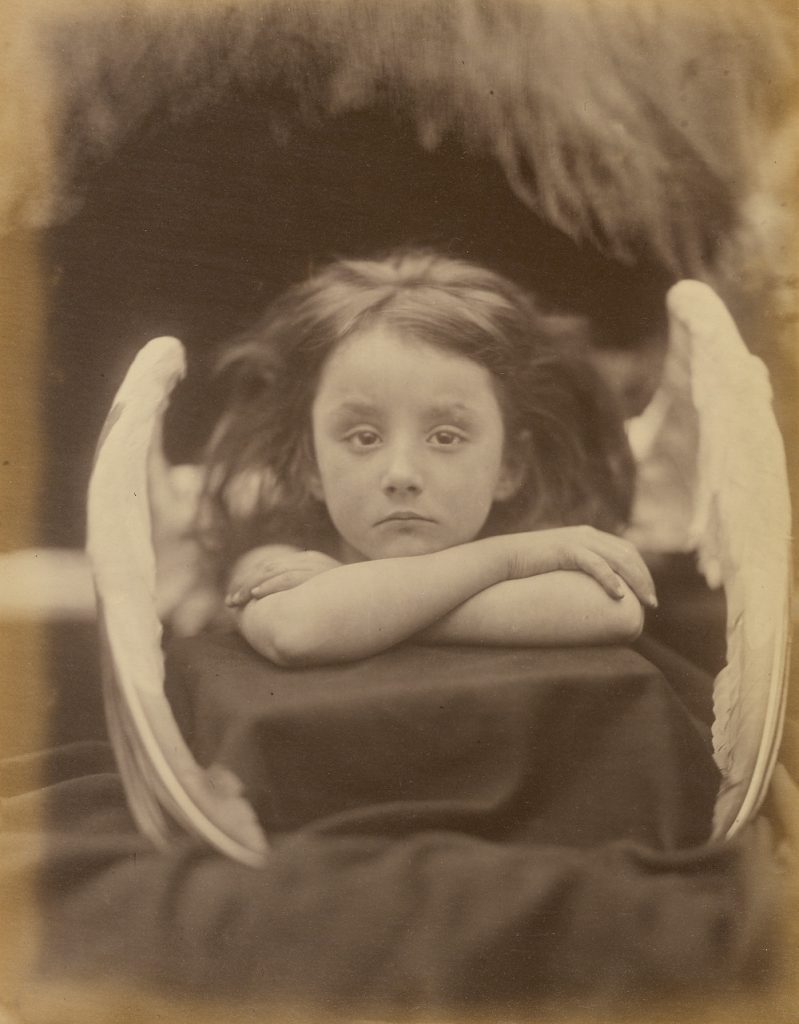

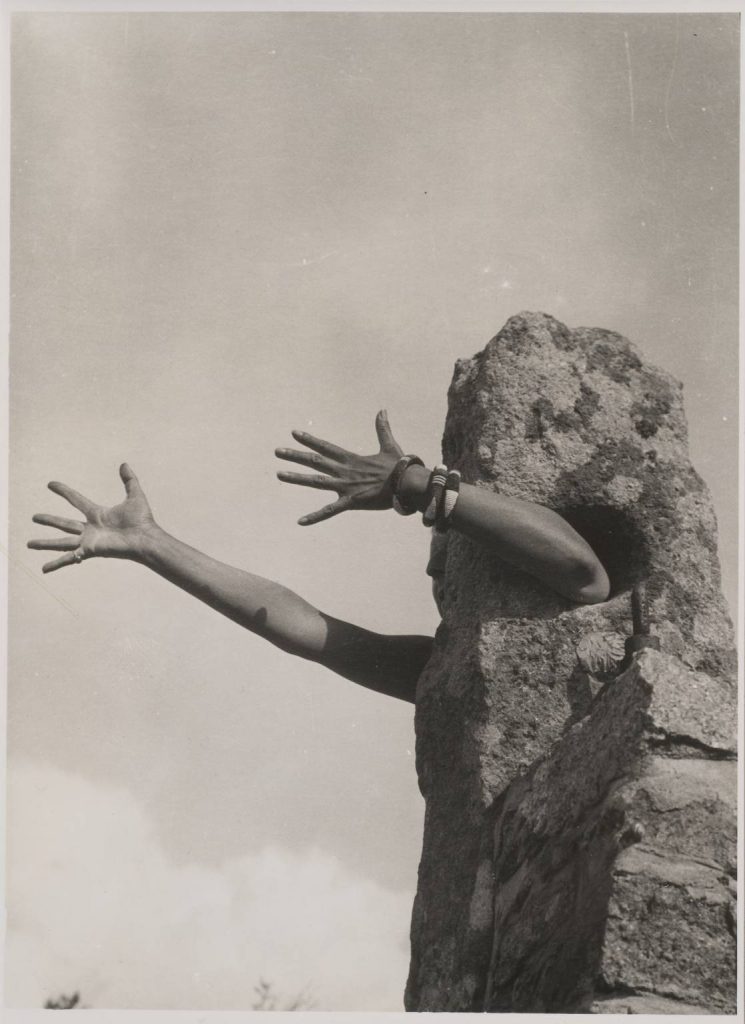
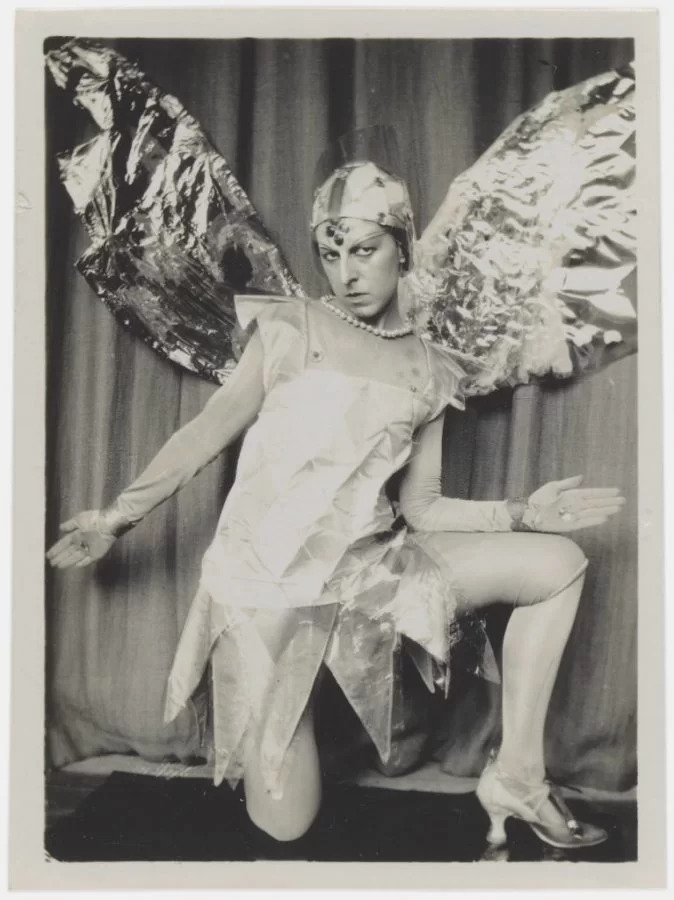
![female photographers: Claude Cahun, Que me veux-tu? [What do you want from me?], 1928, Musée d’Art Moderne de Paris, Paris, France. The Met.](https://www.dailyartmagazine.com/wp-content/uploads/2022/05/restricted.jpeg)
